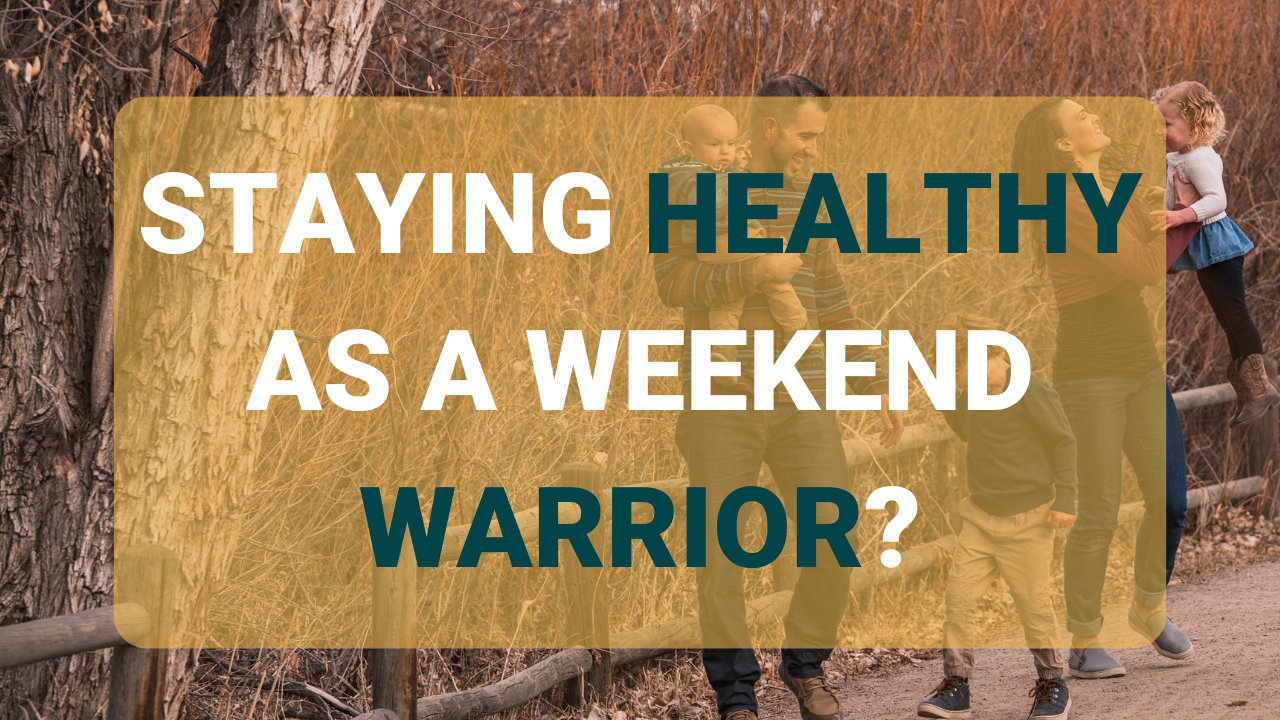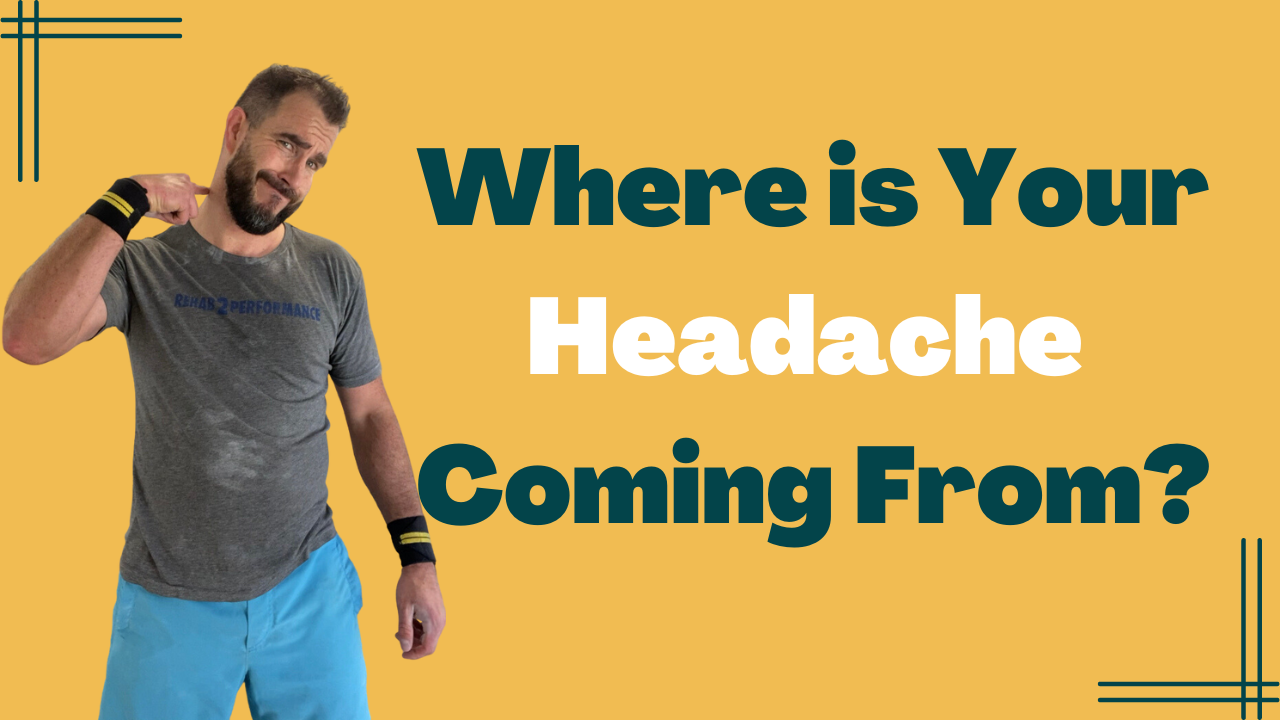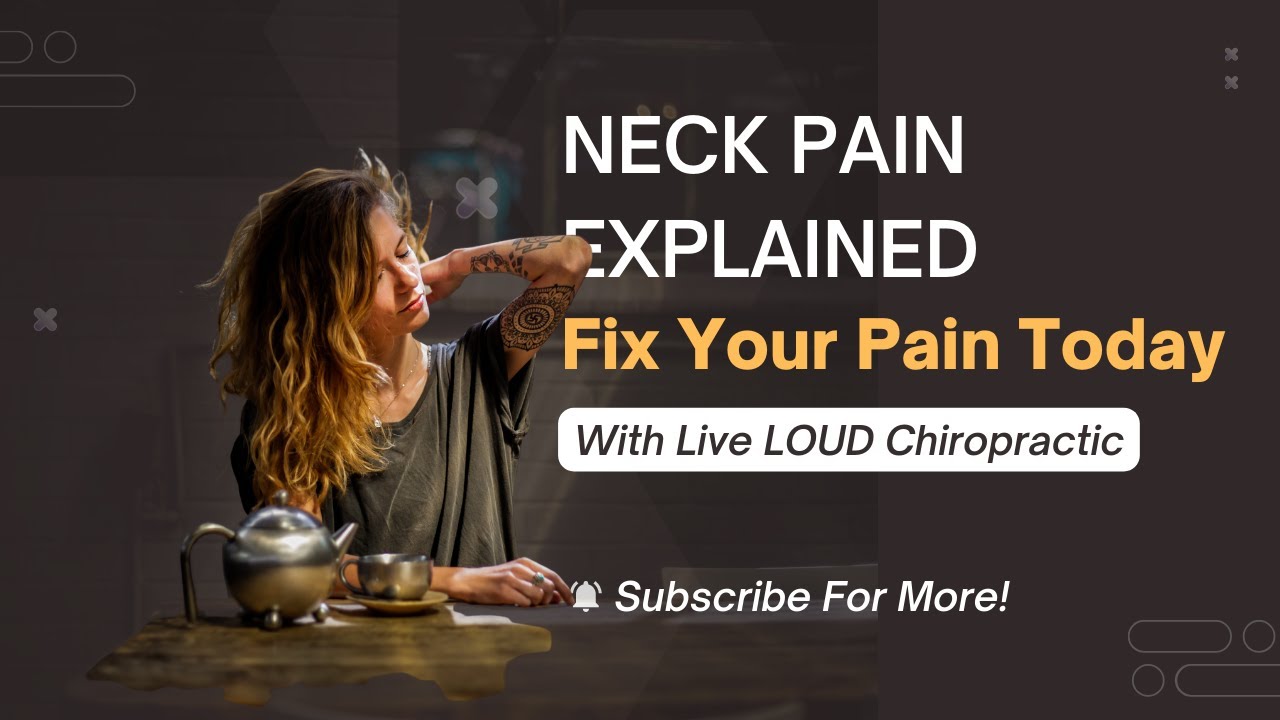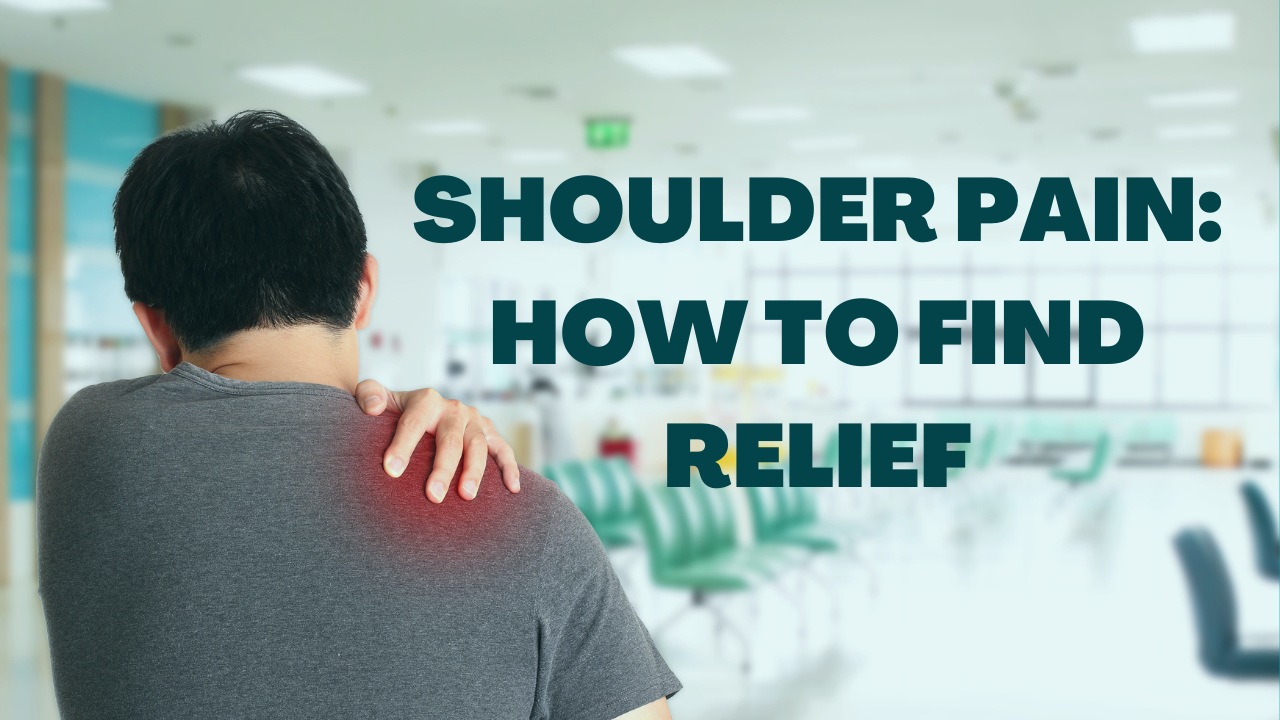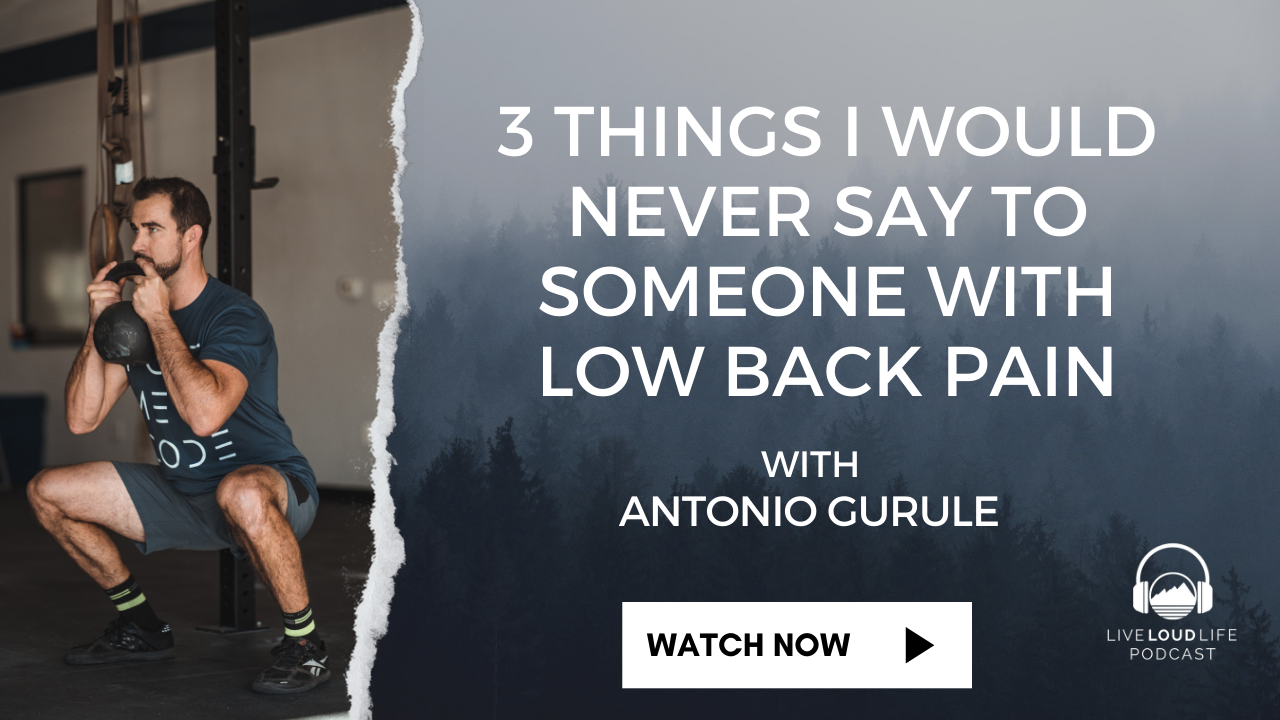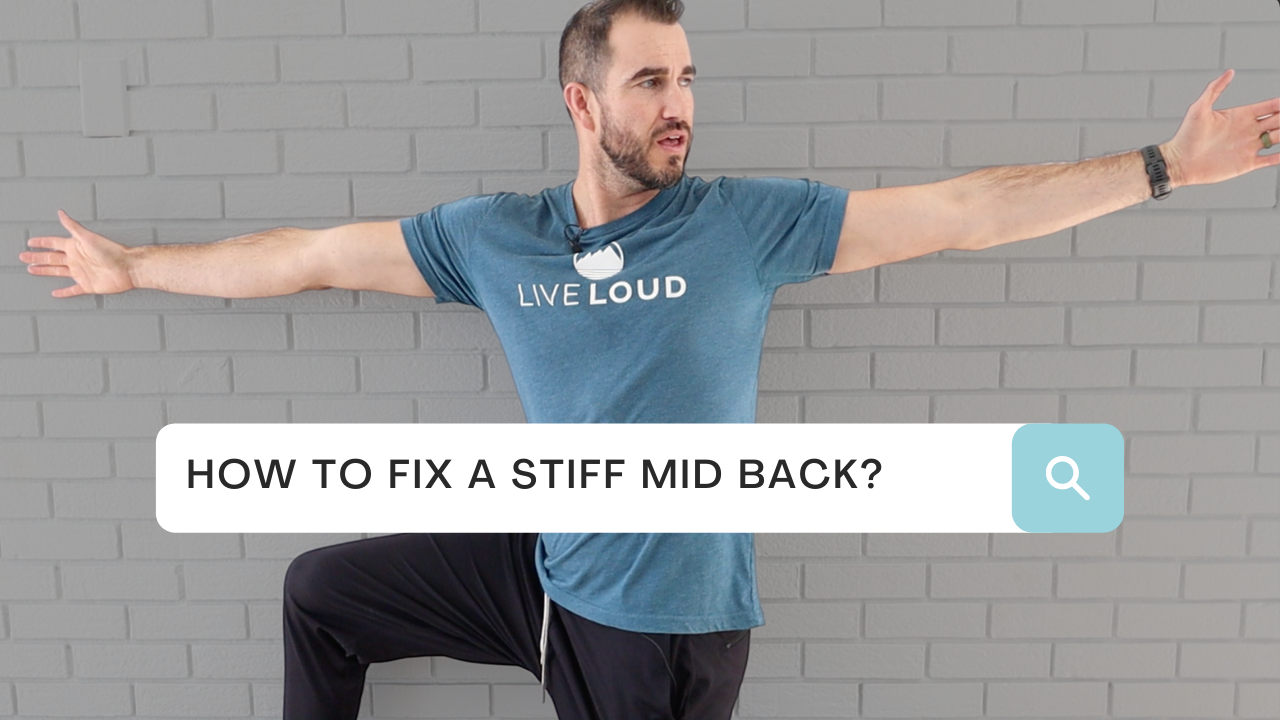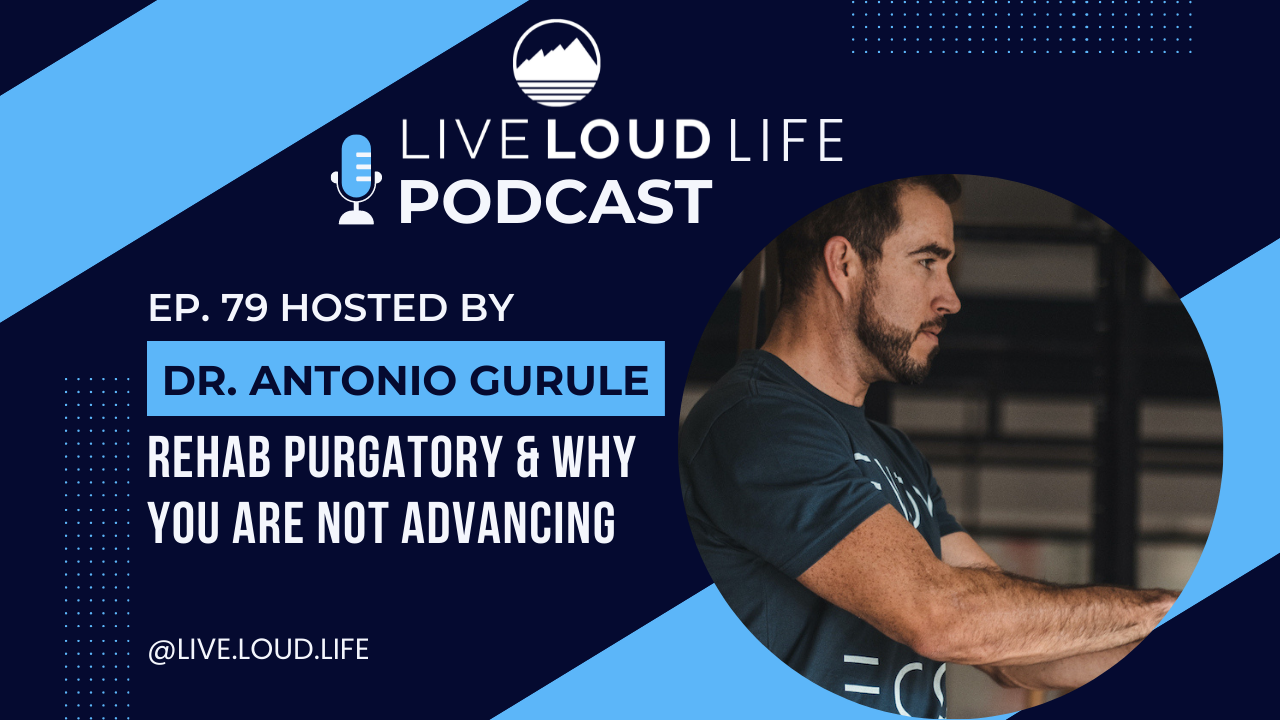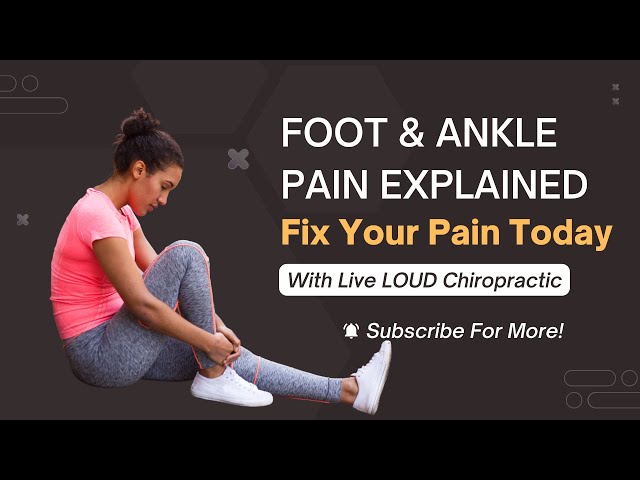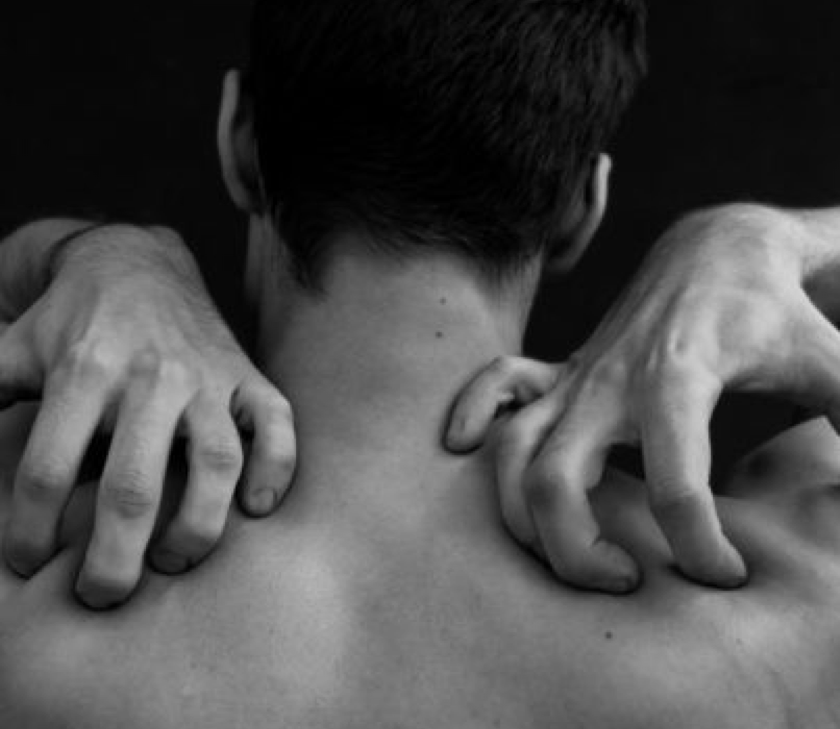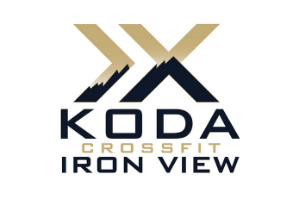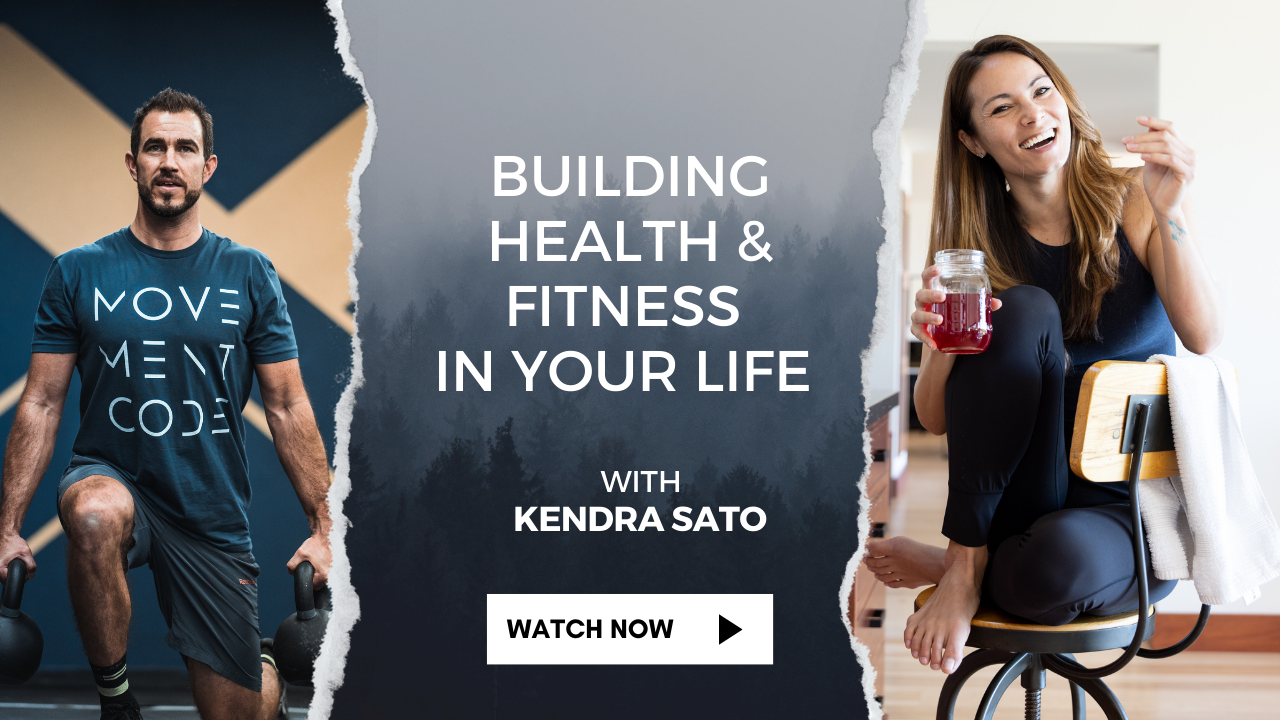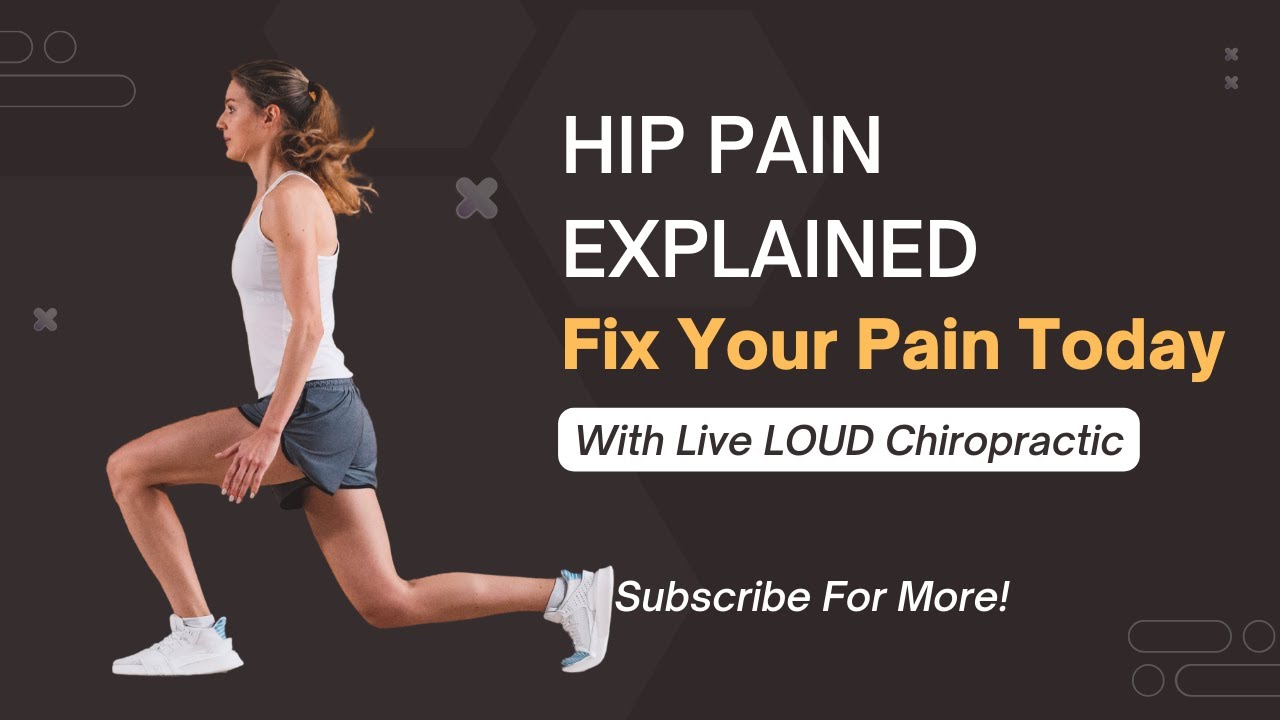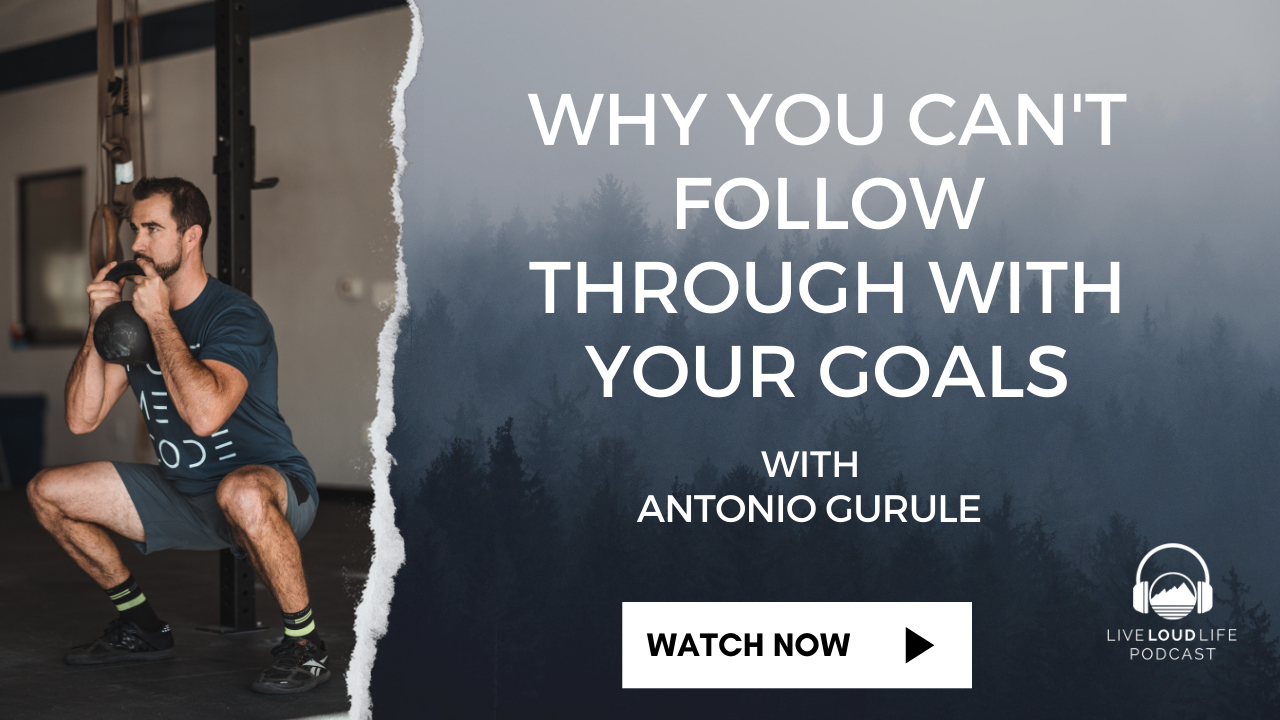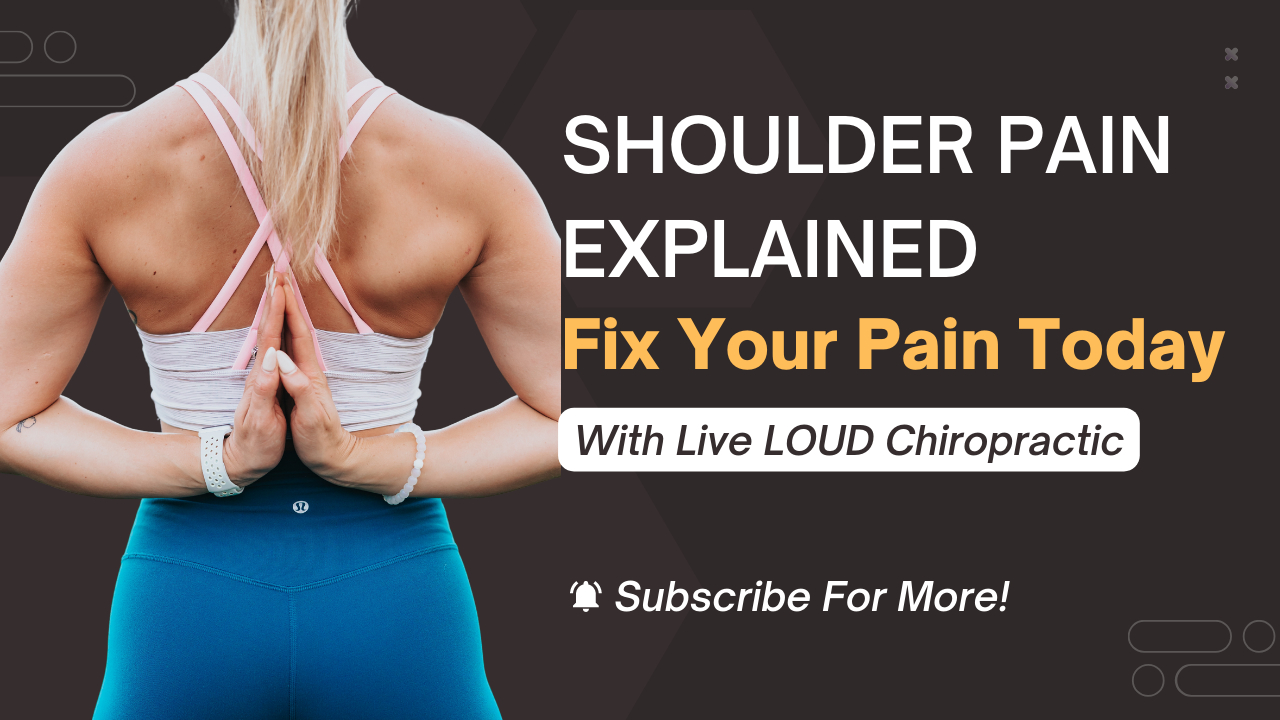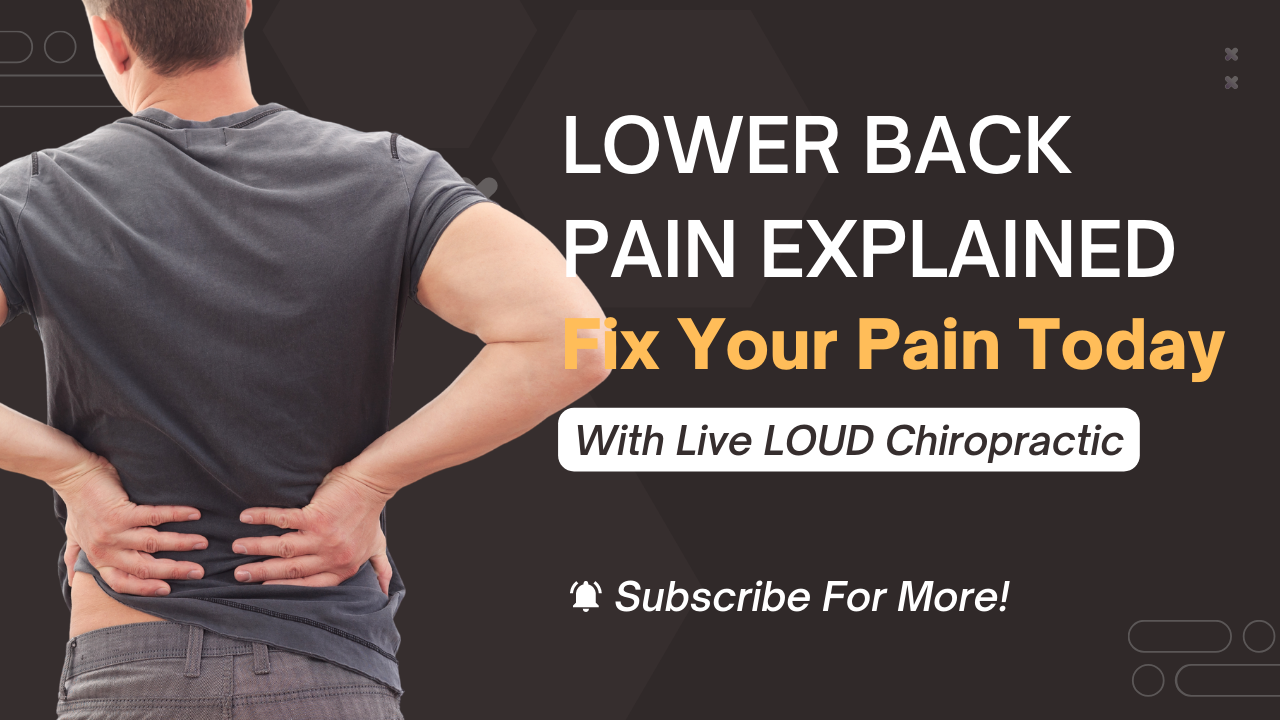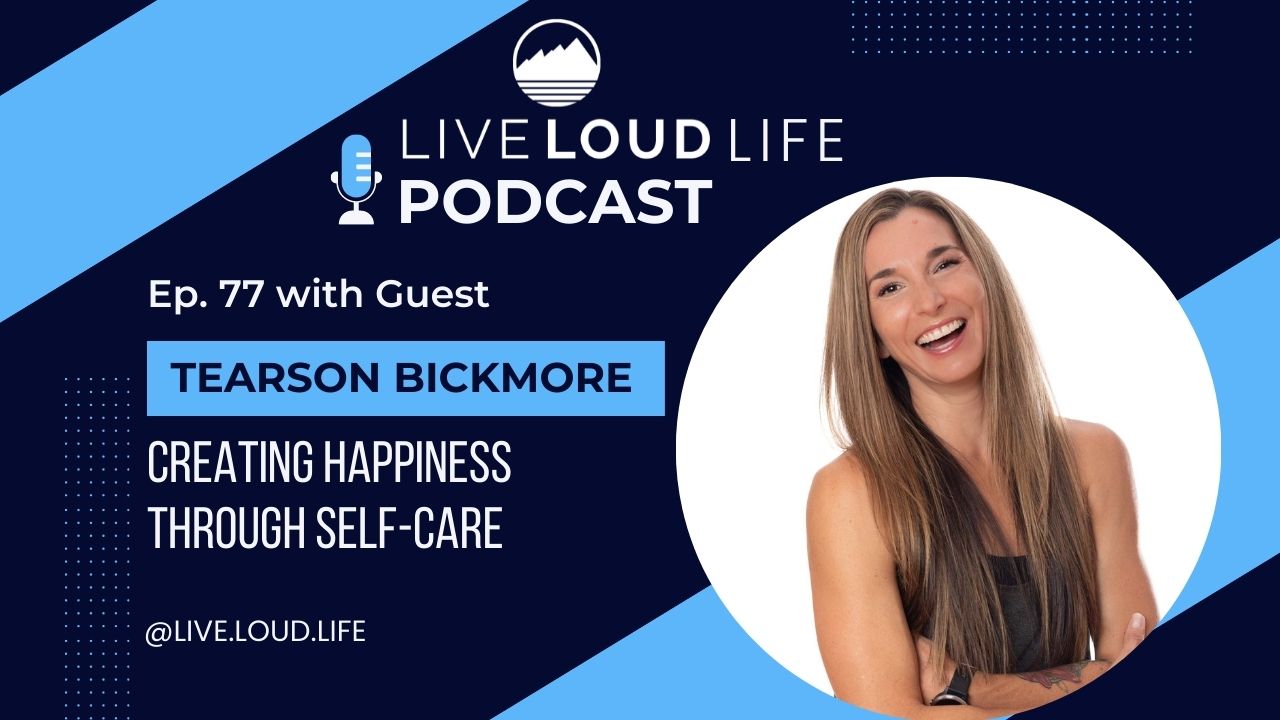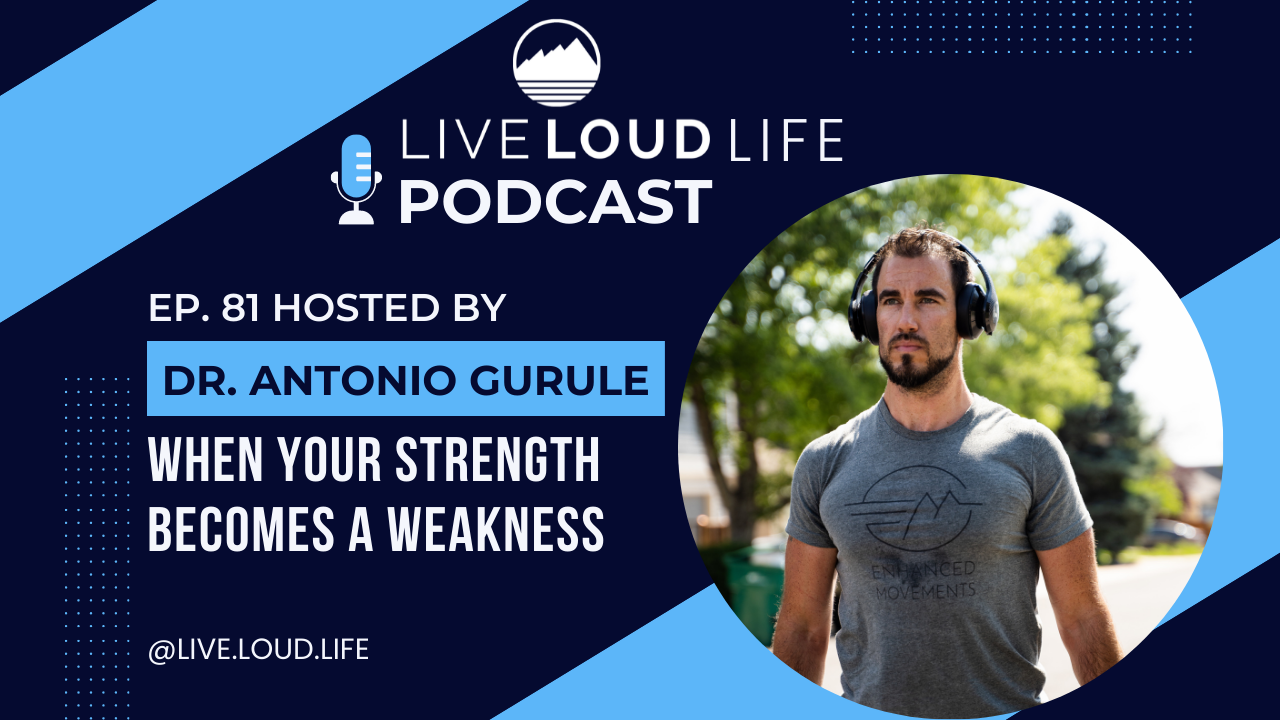Sports Chiropractic
Sports Care
Sports Care
Staying Healthy as a Weekend Warrior
Millions of people participate in sports each weekend as a way to stay active and stay connected to their friends. Inevitably as we age, the likelihood of an unexpected injury creeps up; so how can you stay healthy as a weekend warrior? You may be surprised to learn that the proactive steps you take during the week to stay well will directly impact your ability to keep enjoying your weekend sports.
Why it Matters:
Weekend sports such as a softball game may last a few hours. If you enjoy hiking or mountain biking, you may be looking at 4-6 hours of sports activities each weekend. Either way, it’s a short amount of time compared to the number of hours you spend working each week. That is why taking daily, proactive steps with your health are so important. Stretching to improve your mobility, strengthening to improve your support, and moving through your entire range of motion can help you feel more energized each day
and potentially reduce your risk of injury on the weekends.
– Weekend warriors have a 40% lower risk of death due to cardiovascular disease
– At least 75 minutes of vigorous exercise is recommended each week
– Regular exercise during the week may help reduce your risk of injury on the weekends
Building a new health habit takes time. Using your smartwatch or a health app is a great way to receive reminders to get up and stretch and move your body. The small steps you take to maintain a balance of strength and flexibility will help you continue to enjoy your weekends. Getting older doesn’t mean you need to stop playing sports, but it does mean that you should be smart about your approach.
Why Pro Athletes Choose Chiropractic
For over 100 years, professional athletes of all kinds have used chiropractic care to recover, reduce their likelihood of injury, and even get an edge in performance. But what used to be a secret is now well-known, and chiropractic care is used by sports teams from high school right up through the pros. Historically, the medical staff of pro sports teams have been focused on helping athletes recover from injuries rather than finding ways to improve their performance (that was left to the coaches). Chiropractors provide a unique bridge between the player, coach, and medical team by focusing on injury prevention, mobility,
and performance.
Why it Matters:
Pro sports are big businesses, and athletes, coaches, and owners always maximize their talent. What began as a way to reduce injuries has advanced into a way to improve performance. New research shows how spinal adjustments can influence the brain, spinal cord, and even muscle strength. Here are three exciting findings from the research.
-
Motor control and movement patterns can be influenced by receiving a spinal adjustment
-
Spinal adjustments can alter how you process pain
-
Increases in muscle strength have been found after a spinal adjustment
Pro athletes choose chiropractic for many different reasons. For some, it’s the focus on mobility, while others are looking for a performance edge. No matter what drives an athlete to seek out a chiropractor’s expertise, one thing is for sure- the use of chiropractic care in competitive athletics is here to stay.
Can an Adjustment Help My Athletic Performance?
You may have heard that chiropractic care can help improve your athletic performance. Is it true? The truth is that many athletes work with chiropractors to improve their performance. Chiropractors unique outlook on health and well-being is a perfect match for athletes and people looking to stay active. To perform at your highest level, you need to optimize your body’s structure and function.
Why it Matters:
Sports keep getting more competitive. Even a slight edge can make the difference between success and failure. Athletes of all ages are always looking for a natural advantage that can help improve their performance. Exciting new research has shown that spinal adjustments can influence muscle strength, balance, and endurance.
Here are the three key takeaways:
-
Pain can reduce your strength, balance, and endurance
-
Spinal adjustments can improve joint and tissue motion
-
Chiropractic patients have been found to have improved strength and endurance
Proactively working with a chiropractor, whether you are in pain or not, is a smart idea for athletes of all ability levels. Assessing your movement patterns, making adjustments when necessary, and helping you craft an at-home exercise plan are just a few of the ways chiropractors help athletes improve their performance.
How to Reduce Your Risk of Sports Injuries
As an athlete, there is nothing worse than being sidelined with an injury. Many athletes report that recovery’s mental aspects are just as hard, if not harder, than the physical recovery. With the proper plan of action, many sports injuries can be prevented. Improper training, incorrect stretching routines, and a lack of a good warm-up can lead to an increased likelihood of sprains, strains, and muscle injuries.
Why it Matters:
Developing a fitness plan that includes dynamic stretching, strength training, and cardiovascular exercise can help decrease your chance of injury. Each aspect of your plan requires movement or biomechanics. Biomechanics is the science of how your muscles, bones, tendons, and ligaments work together to produce movement. Ensuring that you have optimal biomechanics is critical if you hope to reduce your chance of injury. Altered biomechanics in one body joint can lead to compensations in others resulting in pain, increased risk of injury, or potentially advanced degeneration.
-
Take time to move through your bodies full range of motion each day
-
Alternative training different muscles groups every other day
-
Schedule periodic movement assessments to improve your biomechanics
Movement assessments are an essential part of every chiropractic evaluation. Chiropractors are trained to carefully examine your biomechanics and provide both passive and active ways to improve them. No two people move the same, which is why having a qualified healthcare professional analyze your movement is so important. By identifying altered biomechanics before you have pain and discomfort, you may not only be able to reduce your risk of injury but maybe even improve your performance.
Science Source:
The Underappreciated Health Benefits of Being a Weekend Warrior. Harvard Health Publishing. 2017 Impact of Spinal Manipulation on Cortical Drive to Upper and Lower Limb Muscles. Brain Sciences. 2017
The effects of chiropractic spinal manipulation on central processing of tonic pain – a pilot study using standardized low-resolution brain electromagnetic tomography (sLORETA). Scientific Reports 2019
Neurophysiological effects of spinal manipulation. Spine Journal 2002
Effects of Chiropractic Care on Strength, Balance, and Endurance in Active-Duty U.S. Military Personnel with Low Back Pain: A Randomized Controlled Trial. Journal of Alternative and Complementary Medicine 2020
Preventing Sports Injuries. University of Rochester Medical Center
Interested in Something Else?
Headaches
Headaches
What Type of Headache Do You Have?
Over 90% of people will have at least one headache in their life. For some, occasional headaches can turn into a daily occurrence that disturbs both work and hobbies. In many cases, headaches aren’t associated with a disease but are instead a result of your daily habits and actions. The most common triggers for a headache include stress, fatigue, lack of sleep, hunger, and caffeine withdrawal.
Why it Matters:
Being aware of the type of headache you have and its triggers is the first step towards finding relief. Stress is a primary cause of all types of headaches. It’s important to remember that stress can be mental or physical. Physical stress can include muscle tension in your shoulders, head, and neck that commonly occurs due to long hours at the computer, unbalanced posture, or a lack of regular exercise. The three most common types of headaches include tension, sinus, and migraine headaches.
-
Tension Headaches: usually felt across the forehead and last a few hours
-
Sinus Headaches: typical occurs in the face, lasts a few hours, and is seasonal
-
Migraine Headaches: pain in the back of the head, temple, or eye that lasts a day or longer and can produce sensitivity to light and sound
Now you’ve identified the types of headaches you are usually affected by, you can begin taking proactive steps to reduce your risk. Getting enough rest and watching your caffeine intake is a good start. Research has also found that spinal adjustments are effective at reducing the frequency and severity of headaches. If you’ve been suffering from headaches, reach out to discover if we can help.
The Link Between Neck Pain and Headaches
Your head hurts. Could it be coming from your neck? You may be surprised to learn that neck pain
and headaches are tightly linked together. A headache that starts from an issue in the neck is called a cervicogenic headache. A cervicogenic headache is characterized by a dull pain that radiates from the neck to the back of the head. At times it may spread around the side or front of your head.
Why it Matters:
Cervicogenic headaches are common if you spend long hours at the computer each day. Neck stiffness and tender muscles around your head and shoulders often come along with cervicogenic headaches because of the position that many of us sit in all day. The added stress and strain on your upper back and neck muscles can add up over time and begin to cause occasional headaches. Without taking proactive steps
to address the cause of the issue, you may notice that the headaches become more frequent and intense.
-
Cervicogenic headaches can begin due to tightness in the shoulders, a stiff neck, or poor posture
-
Over 70% of people with cervicogenic headaches find significant relief with spinal adjustments
-
Spinal adjustments can reduce the severity and frequency of headaches
To break the cycle of daily cervicogenic headaches, you need to address the underlying cause. Staying well hydrated (with water!), stretching at least every hour, and setting your workstation up ergonomically are all important to reduce your headache risk. If you still notice that headaches are bugging you, have pain, or limited neck range of motion, call us for a complete evaluation and plan of care to get well and stay well.
How to Get Rid of Daily Headaches
If you notice that your headaches are becoming more frequent and intense, it can be troubling. Daily head- aches can make it challenging to have a high quality of life and can affect your work and home life. The good news is that many of the most common types of headaches can be reduced or even eliminated by changing just a few of your daily habits.
Why it Matters:
Stress and tensions are two of the biggest triggers for tension headaches. Chronic headaches can cause your nervous system to become sensitized. That means each day; it takes less “stimulus” to kickstart a headache. Sensitization can become a vicious cycle, especially if your days are filled with repetitive motions. One of the best ways to reset your system and decrease sensitization is through movement. Whether you prefer yoga, stretching, or massage, movement of your spine and body can ease the tensions associated with headaches.
Symptoms of Tension Headaches include:
-
Dull, aching pain in the head and neck
-
Pressure and tightness across the sides, front, and back of your head
-
Tenderness in your shoulders, head, and neck
Movement and exercise are key to life and one of the most powerfully simple ways you can break a cascade of daily headaches. If you’re struggling to get moving because of the pain, let us know. We’re happy to work with you to develop a comprehensive plan to help you reduce the frequency and severity of your headaches starting today.
Headache Medications Cause Headaches
One of the primary side effects of many prevalent headache medications is, well…more headaches. That’s right; rebound headaches are caused by taking the same medications used to find relief. If that sounds bizarre, it is. Even taking medications more than just a few days may trigger overuse, or rebound, headaches.
Why it Matters:
Taking care of yourself and creating healthy habits each day can prevent most headaches. If you find your- self reaching for over-the-counter pain medications more than once per week, you may be putting yourself at risk for rebound headaches. Most headache medications aren’t designed to be used frequently because they simply address the symptoms, not the cause of the problem. As you take medication, your body can become sensitized, meaning you need to take more medication to achieve the same result. This can lead to a downward spiral and cycle of chronic rebound headaches. Here are a few ways to naturally reduce your risk of headaches.
-
Get Enough Sleep: Going to bed and waking up at the same time each day helps your body maintain a natural rhythm
-
Reduce Your Stress: Plan, manage your daily schedule, and make stress-busting activities like yoga or meditation a part of your lifestyle
-
Exercise Regularly: Movement and exercise releases endorphins that help your brain and body feel good and block pain signals to your brain
Medications aren’t very effective at reducing the frequency or severity of headaches. Masking the symptoms with drugs can work now and again, but it’s not a sustainable way to find long-lasting relief. To find last relief, you’ll want to follow the latest healthcare guidelines that recommend movement-based care, such as chiropractic. We believe everyone should have the opportunity to live their life free from chronic headaches.
Science Source:
Headache. Stanford Health Care. 2021
Chiropractic spinal manipulative therapy for cervicogenic headache: a single-blinded, placebo, randomized controlled trial. BioMed Central. 2017. 10:310
Tensions Headaches. Mayo Clinic. 2019 https://www.mayoclinic.org/diseases-conditions/tension-headache/symptoms-causes/syc-20353977
Medication Overuse Headaches. Mayo Clinic. 2020 https://www.mayoclinic.org/diseases-conditions/medication-ove- ruse-headache/symptoms-causes/syc-20377083
Further Reading:
Extremities
Extremities
Shoulder Pain: How to Find Relief
Your shoulder is the most unstable and moveable joint in your body. Its wide range of motion occurs due to four primary muscles and their tendons, which together are called the rotator cuff. If your shoulder becomes inflamed or an impingement happens, you may make the mistake of trying to avoid using your arm to help it heal. It may surprise you to learn that not moving can actually contribute to more pain or even lead to a frozen shoulder. Controlled movement is one of the best ways to heal.
Why it Matters:
The most common source of pain in the shoulder is the tendons. Your tendons attach the muscles of the shoulder to the bones. If a tendon becomes trapped, it can result in shoulder impingement. If a tendon becomes inflamed, you may hear it referred to as tendinitis or bursitis. And if a tendon becomes torn, you guessed it; you have a rotator cuff tear.
-
Shoulder Bursitis: If the sac of fluid that cushions your shoulder becomes swollen and painful due to repetitive motions, you may have bursitis.
-
Shoulder Impingement: If your tendons get pinched between or under the bones of your shoulder, it can lead to impingement. Lifting overhead repetitively can cause impingement, and it can result in swelling and pain.
-
Rotator Cuff Tear: Your rotator cuff can become damaged due to overuse, injury, or age. Tears usually cause pain when you try to lift things, and you may hear a popping sound as you move.
Your shoulder and spine work together. While it may seem like they are two completely different areas, it’s been discovered that postural abnormalities can play a significant role in your likelihood of developing shoulder pain. Maintaining a full range of motion in your shoulder and spinal joints of your neck and mid-back can help reduce your chances of dealing with shoulder pain. If you notice shoulder discomfort or restricted movement, contact us for a complete evaluation. We’ll work to create a movement-based plan to help you find long-term relief.
Your Hip vs. SI Joint: What’s the Difference?
It can be extremely confusing to figure out the difference between hip and SI (sacroiliac) joint pain. But being able to identify which one is the culprit is crucial when you are looking to find relief. Your SI joint is the connection between your tailbone (sacrum) and your pelvis. The SI joint is very fibrous and only moves a few millimeters. On the other hand, your hip is much less stable and allows your entire leg to move in every plane of motion.
Why it Matters:
While the hip and SI joints are very different in structure and function, they share similar pain patterns, making it difficult to tell one from the other. It’s common to have SI joint pain mimic low back pain. Bending backward usually aggravates SI joint pain due to the compression that happens in the joint as you move. Hip pain is more likely to occur when you walk or if you try to bring your knees to your chest.
-
Hip Pain: characterized by pain with walking, weight-bearing, and rotating the leg
-
SI Joint Pain: characterized by difficulties while standing, walking, climbing stairs, getting out of the car.
-
Low Back Pain: characterized by pain that radiates into the buttock or leg and may travel down to the foot
Suppose you’ve felt discomfort and aren’t exactly sure if it’s your hip, SI joint, or low back- it’s important to find a chiropractor who will provide a complete evaluation and treatment plan. The reason this is important is that our hips tend to become degenerative as we age, and if your doctor is only looking at a hip X-ray to determine a plan of care- you may find yourself getting treatment for a problem you don’t have. We take a holistic approach to our evaluations, and our movement assessments ensure that we can pinpoint your challenges so that you get the best care plan to live your highest quality of life.
Are You At Risk for Chronic Knee Pain?
Knees hurt? You’re not alone. Chronic knee pain is thought to affect up to 25% of adults and can significantly limit your mobility and quality of life. Your knee is a hinge-joint that primarily moves back and forth (flexion and extension) and allows some twisting or rotation. Every step you take places stress and strain on your knees, so it’s no surprise that trauma, misalignment, and degenerative changes can all take their toll.
Why it Matters:
While knee pain may not be entirely preventable, there are steps you can take to keep your knees as healthy as possible. At the top of the list is to watch your weight. For every pound you are overweight, your knee must absorb an extra 4 pounds of pressure when you walk, run or climb stairs. In addition, the cartilage in your knee is designed to last a lifetime if you take care of it. Here are a few additional ways to keep your knees healthy and strong.
Warm-Up Before Exercising: Stretching your quadriceps and hamstrings before and after you exercise is a smart way to reduce the chance of a flare-up of knee pain
Find Adequate Foot Support: Every step you take transfers force from the bottom of your foot to your knee. Therefore, your shoes should provide the support you need to keep your knees healthy for at least 10,000 steps per day.
Maintain a Full Range of Motion: Ensuring your low back and hips are moving freely is essential to overall knee health.
The joints of your body should have a balance of strength and flexibility through their full range of motion. Unfortunately, it’s not uncommon for people with back issues to find themselves struggling with knee pain after limping around for a few weeks. We encourage our patients to be proactive with their health. Use the strategies above to help reduce your chances of knee pain, and be sure to call our practice if you notice any pain or restricted motion.
Tennis Elbow? But I don’t even play tennis!
Tennis elbow isn’t just for athletes. Lateral epicondylitis (tennis elbow) is a painful condition that occurs when the tendons in your elbow are inflamed and overloaded due to repetitive motion. Because of the motion that occurs when swinging a racket, it’s commonly referred to as tennis elbow, but anyone who has a job that features repetitive arm motions may be at risk.
Why it Matters:
Tennis elbow can become a serious issue because of the pain and weakness that make it difficult to perform your daily tasks. Because it’s an injury caused by repetitive motions, and since many of these motions are essential to your job, finding ways to decrease the inflammation and improve biomechanics is critical. Three natural ways to help reduce the pain associated with tennis elbow include:
-
Rest: Giving your arm time to rest is important to stop the cascade of inflammation and pain Ice: Icing, a few times per hour, is a smart strategy to reduce pain and inflammation
-
Technique: Be mindful of how you are moving your arm, use proper ergonomics, and use a brace for a short time if necessary
Tennis elbow is usually not a condition that will go away on its own. However, we’ve found two key strategies for reducing the pain associated with tennis below. First is receiving a plan of care that includes at-home exercises to strengthen your supporting muscles. The second is receiving adjustments, when necessary, to improve the motion and movement of your elbow joints. If you or someone you know has struggled with tennis elbow, give us a call so that we can provide you with a plan to find relief.
Science Source:
Immediate Effects of Spinal Manipulation on Shoulder Motion Range and Pain in Individuals With Shoulder Pain: A Randomized Trial. J Chiropr Med 2019
Sacroiliac Joint Dysfunction. Spine-Health 2021
Chronic Knee Pain. Healthline. 2021
Tennis Elbow. Orthoinfo by the American Academy of Orthopedic Surgeons. 2021
Want to Keep Reading?
Spinal Discs
Spinal Discs
What are Spinal Discs Made Of?
We all know spinal discs are important- but to understand why, the real question is; what are they made of? Your spinal discs are little cushions that sit between the bones or vertebrae in your spine. Each one of your discs is made up of a tough, fibrous outer layer (annulus fibrosis) and a jelly-like inside layer (the nucleus pulposus). The tough outer layer contains and protects the softer inside layer. These small discs have a big job. They enable your spine to move in all directions.
Why it Matters:
The nucleus pulposus (inner layer of the disc) is mostly made up of water. The high water content helps your discs stay supple and moveable. It acts like a small swivel to allow your body to tilt and rotate. As you get older, your discs tend to lose their high water content and can become degenerative. Degenerative discs don't move as well, are more prone to cause pain, and even contribute to compression on your spinal nerves.
-
Your spinal column has 24 moveable bones with spinal discs between each pair
-
Spinal discs are designed to help your move in all directions
-
Movement of your spine can help keep your spinal discs healthy
Movement is one of the best ways to keep your spinal discs healthy. Since your spinal discs don't have a very good blood supply, movement is how they bring in nutrients. Moving your spine helps your spinal discs get in nutrients to stay healthy and push out waste contributing to pain and inflammation. If your neck or back hurts, give us a call- we'll help you get your life back from pain.
3 Things I Would Never say to Someone with Low Back Pain | EP 88
Live LOUD Life Podcast
Lafayette Colorado
Episode 88
EP|88 3 Things I Would Never say to Someone with Low Back Pain
With Dr. Antonio Gurule
HIGHLIGHTS:
[0:09]What I would never say to a patient.
[2:03] What to do when you have lower back pain?
[4:13] What adjustment and manipulation can do for you.
[6:07] The importance of proper assessment and evaluation.
[7:55] More than alignment, we need function.
[9:38] Have a good assessment and evaluation with your provider.
Connect With Antonio and the Live LOUD team: hello@liveloudlife.com
Subscribe to my YouTube channel here: https://www.youtube.com/c/LiveLoud
Visit the website: https://www.lifeloudlife.com
Like the Facebook page: https://www.facebook.com/liveloudchiropractic/
Follow on Instagram: https://www.instagram.com/live.loud.life/
Guiding you to the adventurous life you were made for!
.
If you dig this give it a like ❤️, if you’re loving it let me hear you with a comment 🗣👂, and if you know it will help someone or anyone out please share 👥📲
Live Loud Chiropractic and Coaching Top Chiropractor and Physical Therapy in Lafayette Colorado Serving Boulder County Boulder, Longmont, Louisville, Erie, Broomfield, and Arvada Colorado
About Dr. Antonio Gurule
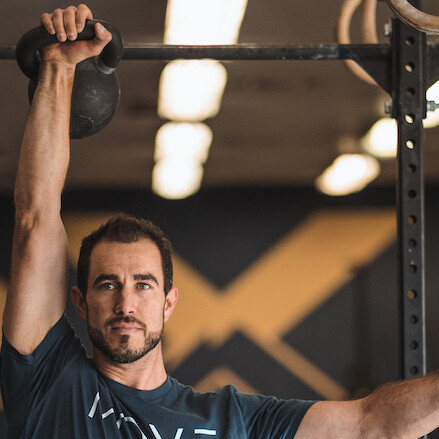
Background:
- Father
- Doctor of Chiropractic
- Owner of Live LOUD
- Personal Trainer & Health Coach
Check Out Some of Our Other Blog Posts and Podcast Episodes
Anthony Gurule 00:00
Hey what’s up guys, welcome back to another episode of the Live LOUD Life podcast. My name is Dr. Antonio, I’m your host of the Live LOUD Life podcast. My wife and I, we co-own Live LOUD Chiropractic and Coaching here in Lafayette, Colorado. We are just outside of Boulder, Colorado in Boulder County. And our mission is to help families. We want to help make families stronger, so that we can build a stronger community. We want to help guide you to the adventurous life that you and your family were meant for. And we do this through chiropractic and coaching. chiropractic, obviously being more of a hands on approach, more of a clinical conversation, clinical diagnostics, but the coaching aspect is really what we believe is, you know, the foundation of what our system methodology, whatever you want to call it is, because a lot of this comes around through just coaching suggestions and recommendations. also, you know, obviously within that comes into clinical prescriptions of certain things to eat or supplements, so on and so forth. But it’s coaching a lifestyle, it’s coaching, it’s coaching a philosophy and a foundation about how to live an active healthy life as an individual, and setting an example of a healthy active life for your family, for your immediate family, for your friends, and more importantly for your community. So stronger families to make a stronger community as a whole would be a win win, right? And that’s what we want to be able to do. we want to be able to help fill in the gaps in the holes that you’re maybe not getting from, from other roles and conditions.
Anthony Gurule 01:43
And today that’s in particular where we’re going to talk about. it’s going to be a little bit more of a shorter episode because this is more of a quote unquote, you know, just discussion around how to lay out a framework and a better understanding of how to work out or what exercises are safe or maybe not safe during pregnancy. This is a very, very common question that we get.
Anthony Gurule 02:12
My wife Nichelle has created a mini course that has some workout ideas, recommendations, and prescriptions than laid out into a workout. She guides and educates other clinicians on how to broach this topic as a chiropractor, how to better serve prenatal patients through chiropractic care, but also exercise recommendations and prescriptions, having recommendations with other personal trainers within the community whether that’s CrossFit whether that’s Orange Theory, chatting with coaches and owners and saying hey, if you have prenatal patients and they’re having these types of symptoms, or this has happened, here’s some better recommendations, not modifications. We call them lateralizations–you’re just you know, you’re doing something something different or something else we you know, we borrow that term from Charlie Weingroff, who’s a physical therapist and strength conditioning coach. But it also and also doulas, right, doulas and midwives and OBs who are directly involved with the prenatal process from nearly conception all the way through, having this conversation. we know that exercise is important during pregnancy,
Anthony Gurule 03:19
There are so many different studies that talk about the benefits of exercising during pregnancy, not only for the mom, but also for baby, which is quite interesting. They’re seeing increased cognitive-what’s the word I’m looking for? Excuse me, their cognitive output as a as an as a child through as they age is actually better from moms that actually worked out during pregnancy.
Anthony Gurule 03:50
Now this is tough, right? How do you define working out or exercise? it’s different for everybody. But we want to, and we encourage that, and yet we’re sympathetic to the different stages of life, aches and pains, so on and so forth, which obviously would limit what you can do from an exercise perspective. So you know, it’s a bit of a gray area on determining what is working out? what is exercise? What are the physical guidelines or recommendations for pregnancy? And without getting into the like, nitty gritty detail of every single thing. And obviously, every potential situation, if you had this versus this, what could happen? we’re not gonna be able to do that. What we just want to lay out is what is what are we trying to accomplish here, and we want to encourage you to stay as physically active as possible.
Anthony Gurule 04:41
And one of the things that constantly comes up is, well, should you add something in that you have not already been doing? Let’s say for instance, someone just through the stages of life with work and kids or whatever that is, they were not able to work out as much before they got pregnant, but now that they’re pregnant, whether they have more time or they understand the importance of exercises during pregnancy, well, would we say, “Well, you haven’t been exercising, so you shouldn’t do too much.” No, that doesn’t, that doesn’t really make sense. Now, we would encourage not to do too much, there’s obviously, you know, a too far swinging the pendulum of the other way. But we wouldn’t say “no, don’t exercise because you weren’t doing something before,” we just have to find those first few stepping stones to help them start to gain some momentum. and help hold their hand, if you will, So that their technique and they feel confident about lifting, or how far they’re walking or whatever that is. And that’s an important topic, because a lot of times people want to add things in, but they weren’t quite ready or weren’t doing them before. And they then assume that they’re not able to do them at all. So you do have to take that in consideration, there is a ton that you can do, and that you can still add, even though you weren’t doing them prior to pregnancy.
Anthony Gurule 05:54
Now on the big questions is, is it safe? you know, outside to contact sports, or different things like that the majority of what you’re going to do is safe for pregnancy, right? Rock climbing, we have pregnant patients that have been rock climbing before, obviously, there’s a certain inherent risk with certain sports or activities. You know, you could fall off riding your bike, you could fall over running, right, so we’re not encouraging any of these by any means. We’re just kind of, you know, setting some suggestions, if you will. And you have to take into consideration.
Anthony Gurule 06:31
Now, there are certain things to consider when you’re talking about like weightlifting, and how heavy and the intensity that you’re doing. And if you’re doing Valsalva movements, which is essentially holding your breath to maintain a more rigid or stiff torso, as you’re seeing changes in blood volume and blood pressure, you know, you do have to take that in consideration. And that is again, of course a conversation with your provider that is managing your, your pregnancy, but we recommend Mama’s weight lift, or do resistance training. During pregnancy, again, we talked about about load management and the intensity and things like that, but you can still lift and do fairly intense things. And it’s a fairly as a you know, as a scale and a wide range during pregnancy and see a ton of benefit from that. Now, are we trying to hit one rep maxes and PRs during pregnancy, I mean, some would argue yes, but I would argue, why, that’s not really an accurate representation of what your strength is anyways. So you know, you do have to to kind of keep manipulating the numbers and the weights and the intensity and the sets and reps in order to do it. But weightlifting and resistance training is safe, and it is effective. Now, outside of that, there’s not a lot of unsafe things to do, again, outside of contact sports, or things that would elicit, you know, potential trauma to you or baby based on impact we’ve had, again, not our recommendations, but some have tried very just easy scheme, because they’re in the winter months, and they wanted to and they felt very confident about not falling. So you know, you have those types of things.
Anthony Gurule 08:16
Overall, again, we’re talking about movement. You need to move, and it’s good to get your heart rate up. And it’s good to breathe hard. So that doesn’t mean just because you’re pregnant, you can’t do HIIT training or circuit training or CrossFit or Orange Theory. But you do have to listen to your body and understand certain signs that would indicate that things might be too much, right? Now those are going to be different for everyone, but a lot of this comes down to you know, lightheadedness, you know, breathing too hard. Certain aches and pains within lower extremity, chest, abdomen, so on and so forth would be obviously like your more extreme ones. If you’re becoming pale or anything like that, I mean, again, these are the same criteria, though, that would be if someone else was working out or training too hard. So it’s realistically the same thing. It’s just that your threshold level for all those most likely have gone down. And depending on what type of an athlete you were before, you’re going to be maybe a little frustrated that you’re not able to do the things you were able to do previously, which makes sense. But if you’re someone who wasn’t exercising before, you’re probably going to be a little bit more hyper aware of that, of just feeling that shortness of breath or that uneasiness. So again, we’re not saying you have to push through that because we’re not trying to set yourself up for a strength and conditioning program to increase your metabolic capacity to increase your strength and conditioning during pregnancy. We’re trying to help you maintain a healthy active pregnancy.
Anthony Gurule 09:54
Now, walking. walking is great. but in general, we encourage you to do something above and beyond walking. Obviously, again, certain things would dictate that you would not be able to do so. And this is again, any exercise. Any exercise that you do during pregnancy needs to be consulted with and work through and have a conversation with the primary physician who is managing your pregnancy, whether that’s your nurse practitioner, your midwife or your OB or obstetrician, right. But we would encourage more than just walking. walking is fantastic, but that’s kind of like your baseline minimum, right? Just like our activities, or recommendation activity guidelines. We want a few days a week of where we’re kind of just doing this steady state getting our steps in, you know, kind of pushing ourselves, we’re huffing and puffing, but still just kind of at that conversational level, but you’re not really getting a lot of benefits outside of that.
Anthony Gurule 10:55
So if you’re just walking, high five. kudos. can you do something more? Can you do some bodyweight squats? Can you do some bodyweight, you know, good mornings? can you do some walking lunges? do you have a suspension training, we’re able to do some bodyweight rows? Do you have some bands that you can do some rows with? You know, there’s a lot that you can do that allows you to get a little bit more out of that. Now, again, this all comes back down to preferences of exercises that you like to do, because that’s gonna allow you to maintain the most consistency, but then also the intensity that you like to do. And we do encourage having an open mind and at least being willing to try some high intensity things that allow you to still get your heart rate up a little bit. And it’s okay to lift more than five or 10 pounds. And not saying that that is a bad thing. There’s programs out there where it’s all directed around that where it’s lighter weight, high rep, but I just don’t want individuals and mamas to feel like they’re not able to do more and or being ashamed because other people are just saying they should back off because they’re pregnant. “why would you need a lift that much?” It fits within your strength, and your comfort, and your wheelhouse, that is totally fine.
Anthony Gurule 12:05
Again, you if you’ve been doing that enough, you understand the risk reward ratio and having a conversation with your practitioner has driven us to kind of help navigate and guide as you start to get further through pregnancies, what things maybe we need to change or manipulate. But that’s totally fine. Now outside of that, the question around safe also comes up around core exercises. diastasis recti, pelvic floor strength, so on and so forth, we want to enhance the capability of understanding how to control tension within your abdominal wall and your pelvic floor through pregnancy, because the pressure is increasing due to baby taking up more space. But we’re not we’re not necessarily we’re not gaining more strength, right.
Anthony Gurule 12:45
And so what a lot of people assume it’s when we’ve seen this, is “I don’t want diastasis. So I’m doing more core work to prevent diastasis from happening.” diastasis recti will happen in 100% of moms, it’s estimated at the week 35 Everyone will have some form of it. Now it is technically not a quote unquote diagnosis, though, until 12 weeks postpartum, because it is a normal thing that everyone will get. So you can’t diagnose someone with something that everyone will get–doesn’t make sense, right? So after that, though, if you still have weakness or spacing issues, then we can have a you know, a stronger conversation about putting a diagnosis on that.
Anthony Gurule 13:26
But what we’re trying to enhance and help is what exercises are quote unquote, not safe versus unsafe, but adding too much pressure or tension into the abdominal wall or the pelvic floor and creating more laxity. again, as that pressure for as baby’s growing starts to put more pressure on the pelvic floor and the abdominal wall. If you’re doing more things that increases the pressure within the within the abdominal cavity that’s going to push on that separation even more and/or push on that pelvic floor even more, creating potential incontinence or prolapse issues and/or more bulging and doming within the abdominal wall stretching out that separation or that gap even further, potentially making the recovery process more challenging or slightly longer. I’m not saying that it will but potentially, so we do have to take that in consideration. So we go through activation exercise of the pelvic floor, of the abdominal wall so that you better understand how to control those pressure increases while you’re lifting or exercising so that you simply can stay at a management level.
Anthony Gurule 14:28
And that in turn, helps you get through pregnancy of understanding how to lift up your older kiddo, having to lift up dog food or anything like that. It’s just managing and controlling pressure. So there’s really not anything that I would say that safe or unsafe. Now, things that we would advise against for core exercises is sit ups or crunches. You know a lot of those things that create like hanging knee raises and different things like that during pregnancy. A lot of those things that create a lot of intra abdominal pressure and tension. and especially during a flex position, that tends to put a lot more pressure on the abdominal wall, the separation where diastasis will occur as well as the pelvic floor.
Anthony Gurule 15:09
So, you know, while we never say never, there’s definitely a category of things that we definitely urge against because the risk/reward benefit and again, risk not being “injured,” But risk of potentially putting more pressure and making the recovery process on the other side harder, is not is not something that we find to be as advantageous. But you can still get the benefits of quote unquote, core exercises through full body movements such as goblet squats, such as deadlifts, you know, depending on the phase that you’re in, push ups, which are, you know, a dynamic plank. or being able to do a TRX row, which is a reverse plank as you’re just lifting yourself up. three point rows where you’re on, you know, two hands or doing like a row on a bench, where you’re in a tabletop position that’s adding anti rotation exercises. So there’s a ton that you can do that still highlights and isolates, the core isolates, sorry. that highlights and will emphasize core activation, but through a full body compound movement. And what’s great about that is during pregnancy, depending on your energy levels, it’s hard to do all the little isolated accessory and all these separate exercises as it is. So it’s kind of nice being able to combine everything, so you get more bang for your buck, especially if you’re a parent and you’re on and you’re on baby number two or three, right?
Anthony Gurule 16:31
So what exercises are safe for pregnant women to do? All are. reduce or eliminate for sure contact activities, different things like that. the increased risk activities of you know, trauma and things like that. Outside of that you’re managing pressure, I would definitely encourage reducing anything that’s heavy lifting, that’s, that’s requiring you to do Valsalva moves, you’re having to hold your breath for an extended period of time. that changes blood pressure, so on and so forth. But outside of that, Pregnancy is a completely safe time to do all exercises. we definitely as we highlighted, urge and encourage, you know, certain things over other ones just for you know, added bang for your buck or full body movements, so on and so forth. And that, but outside of that you are free to do what you want.
Anthony Gurule 17:19
If you want guidance, though, you know, there are there are trainers out there that work specifically with prenatal patients. we would love to be able to have that conversation with you if that’s something you want to bounce back or navigate. Because we do want to encourage as much as we can. A very, very active pregnancy through exercise working out or however you want to describe that. So if you found this beneficial, please like share, subscribe. if you’re pregnant, I hope you can utilize this and take some of the information for you and yourself. If you have anyone else you know… a relative a family member, a friend who is pregnant and they’re unsure they’ve been you know asking this question what things I don’t know what things I can do. I don’t know if it’s safe for baby share this video with them. We’d love to be able to provide a better frame of reference and or context to be able to ask better questions so that they can find the workout program or the movements that work best for them during their pregnancy. Until next time guys live loud .if you’re currently pregnant, Congratulations, and we look forward to helping and serving in the future.
–
Fix your Neck Pain Today | Neck Pain Recovery Explained
Fix your Neck Pain Today | Neck Pain Recovery Explained
Are you currently suffering from neck pain?
Neck pain that might be acute, meaning to just happen recently, within the last few days or weeks? Or a chronic condition that you’ve been dealing with on and off for the last few months, if not even years?
Oftentimes, we hear people come into our office here at Live Loud Chiropractic in Lafayette, CO and just say, “oh, I have a bad neck. I have disc degeneration of degeneration of the spine. And that’s the reason why I have neck pain.”
Although neck pain might seem common, it is not uncommon for this condition to be mismanaged. Oftentimes, our patients are being put through the wringer whether that’s with massage, Acupuncture, PT, Chiropractic care, primary care, shots, or orthopedics, without the proper understanding of why the pain is even there in the first place.
PLAY VIDEO ⬇︎
If you’re dealing with neck pain, this blog is for you.
If you have a family member who has been dealing with either chronic or acute neck pain, and they’re looking for some support, please share this with them.
What will you get in this blog?
- break down the common causes of neck pain
- give you the Live Loud approach to handling neck pain and musculoskeletal conditions.
- A few of the tests we use to determine what the cause of pain is.
- Some things that you can do about the neck pain, right when you’re done reading this blog.
- A long-term approach to helping with neck pain
- The platform and the philosophy about how a movement-based approach really helps you as an individual deal with any sort of aches and pains that you might be having.
Overuse and Neck Pain
A lot of the issues that you’re going to be seeing with neck pain are overuse in nature, but it’s, almost from a stagnation perspective.
Your head weighs 12 to 20 pounds, and based on our somewhat sedentary lifestyle for Western civilization it puts a lot of tension on the back side of your neck. Thus, those muscles are constantly having to contract and hold crazy tension and tightness. Then we create this negative feedback loop.
Rule out any Structural Issues with your Neck Pain
What we’re going to first and foremost is make sure we rule out any sort of structural issues. Again, outside of you having trauma, an accident, etc the likelihood of this being the case goes down.
What we will have you do is:
- sit up nice and tall, and we just basically push down on the head.
- What we’re doing here is seeing if there’s any pain or trigger of symptoms.
- After that we’re going go to the side, and then to the other side.
One thing to consider, though, is, in the case of neck pain, if you’re having any sort of ridiculer symptoms, meaning you have numbness, tingling, or maybe pain down the arms, this is what we’re trying to look for. Maybe there is a disc issue or some sort of encroachment on a pinched nerve at the actual spinal level.
If those do not replicate then we’re going to be looking at the soft tissue structures within the super clavicular area. Which is right in the soft part of your neck where all the nerves come out of, but that’s what we’re trying to look at.
Basic Range of Motion with your Neck Pain
Now we’re going to look at basic range of motion:
- Tuck your chin down to your sternum.
- Look all the way up
- Back down,
- Look over your right shoulder
- Then look over your left shoulder
So active range of motion is good, we would assess passive range of motion as well to determine if there’s any sort of issues. For some people, they get neck pain when they’re working out – this means that there might be a technique flaw that we would have to address.
Commonly, we see this with overhead pressing, where someone is driving their neck through, essentially just creating a pinch point in their neck.
Range of Motion and Mobility in the Thoracic Spine & Neck Pain
The other thing that we have to look at is where does your head attach to the upper part of your back?
We have to address what the range of motion and mobility within the thoracic spine is to determine if that is affecting where the position of the head is. For this we will do a cat cow exercise.
With the cat cow exercise, we’re going to be looking for extension. In doing this we get a lot of spinal motion. To segment off where we want the mid back, you’ll come back to neutral, sit your butt back down through your heels, and do the same cat cow motion.
This way we can isolate more of the thoracic spine and see if there’s any sort of limitations. Commonly we’re seeing an extension limitation, meaning more rounded forward. When we’re rounded forward that’s going to put your head forward putting more pressure on your neck or that CT junction or where your neck meets your upper back.
Is Your Neck Pain coming from a Neighboring Area?
This is an important distinction of understanding. Is the neck issue actually coming from a different neighboring area? Or is it just from stagnation and not moving a lot?
Next, what we’re going to do is have you lay on your back face up. From a manual therapy side, we know there’s a ton of benefit from doing soft tissue work. Soft tissue work is something we at Live Loud like to pass off to you to do at home. This allows you to become autonomous in your care and address the tension that you might be feeling in between our sessions.
We’re going to be doing essentially just basic, pull and stretch motion to help work on any tight spots. This also helps me palpate to determine what areas we need to focus on more. Obviously, you as an individual will be able to feel where you’re tighter in certain areas, and are more tender, and you’ll want to focus on those. We’re just going to work all these different spots within this session, especially the suboccipital.
The Suboccipital and how important it is in affecting your Neck Pain!
The suboccipital is underneath your occiput, which is the base of your skull on the back. Why are these so important?
Well, many of us are doing some form of computer work nowadays, or on our cell phones, reading, whatever that is. These are directly tied to eye righting reflexes and leveling of the head.
So, if I am rounded, I’m going to have to tip my head up to be able to see level to the horizon. Oftentimes, these get extra tight. We’re going to do an extensive amount of work here with fingers, and or maybe dry needling to help relieve the tension here to open up range of motion.
What you can do at home for Neck Pain
Now, these can also be worked on at home. All you need are some trigger point balls and a yoga block. Trigger point balls are two balls that are basically together that are softer than a lacrosse ball and firmer than a tennis ball. These are going to basically cup and hug the suboccipital muscles.
You can take this exact same tool at home, to work on the tension in between our sessions, during your micro breaks, while you’re working on the computer or at work or whatever that might be.
Once you have trigger point balls and a yoga block you can set the balls on the yoga block and lay down placing them where they are cupping your suboccipital.
Once you do that you can start to turn your head side to side, up and down, and draw different shapes to hit different angles and corners to make sure you’re getting all the areas that you can.
Important note when you establish range of motion with Neck Pain
A couple important things to note, this goes true for any part of your body, once you’ve established more range of motion or decreased pain, you have to put that into context, you have to show the body that the pain that you previously had has improved, or that your range of motion has. One of the movements that I love, especially for the neck is called:
movement mapping for neck pain
What we want to assume is that we have this, imagine a space globe around your head, right, and you have a marker or something on the top of your head. Now, your goal is to cover the inside of the globe as best as you can.
So, you’re basically going to try to paint the inside of a globe and go through all of these different ranges of motion. Now the reason why we call it mapping is you’re going to have a better understanding about where your tight points are. Where maybe we’re getting some kinks in the system as well.
But more importantly, all the range of motion that we’ve been improving through adjustments and soft tissue work, you now can translate into better and more movement.
If you have questions about what this looks like take a look at the video!
Expand with Resistance Training
We would expand upon this too, with some sort of resistance training, whether that would be a plank, or even like a bird dog and something where you would have to stabilize and hold your neck and teach it what we want for range of motion and stability.
These are a few important tools that will help you handle your pain throughout the day, if it’s something that’s kind of chronic and or ebbs and flows based on how much you’re either at a computer, or how much you’re driving and commuting, all of which have the effects on how much load or pressure is going on to the neck.
But again, it also creates a frame of reference in context as to how you can improve your range of motion and gain more confidence with your neck rather than just staying stiff and turning your whole body when your necks hurting. If you continue to do that then your neck is just going to get tighter and tighter and build upon itself.
Test it out on your own to Help your Neck Pain!
If this was helpful, this would be a fantastic thing to at least test out on your own. What we’re really looking for as far as this movement mapping principle, right, is it not only helps you take away a lot of the pain and discomfort because again stagnation just makes you tighter.
We want to break up stagnation with movement, that simple. But as you improve range of motion, whether through adjustments, trigger point work at home, or in the office here at Live Loud Chiropractic. We have to create more context, if you don’t use the new range of motion that we’ve just established, then you’re just going to stay tighter, right?
You have to teach the body what you want it to do, as far as from a functionality point and just simply range motion, but also stability.
We here at Live Loud Chiropractic encourage you to take the exploration model that is by far the foundation of every part of my conversation, whether it’s neck pain, knee pain or shoulder pain as it helps you better understand where your sticky parts are, where you’re tight, and where it’s painful.
This way you have a better idea of what to avoid or what to what to dive in a little bit deeper on to see if you can improve it. This also creates a better context for me to have a conversation for you.
Final Thoughts on Neck Pain!
Whether you have a potentially chronic issue or something more acute where maybe you just woke up with neck pain and you feel like you can’t move.
We here at Live Loud Chiropractic in Lafayette, CO are always here to help and support you and your pains. Having more context around your neck pain will help determine what the best course of action for you is to help you get back to all the activities that you want to be able to do and live a loud life.
How to Fix your Foot Pain Today || Foot and Ankle Pain Explained
How to Fix your Foot Pain Today | Foot and Ankle Pain Explained
Are you suffering from foot pain?
Foot pain can be a very frustrating injury to deal with. Why? Because it’s our relationship with the ground.
We are bipedal creatures, we walk upright, and our feet are on the ground all the time.
Now, if you’re dealing with foot pain, this, amongst so many other things, are being mismanaged.
Why?
Because you go to your primary care, you go to somebody who’s talking about foot pain; they’re going to send you to a podiatrist.
While there are many great podiatrists out there, the recommendation for foot pain is orthotics or some sort of more supportive shoe without even understanding or doing an evaluation on whether that person would even need supported shoes.
PLAY VIDEO ⬇︎
Similar to how an x-ray and an MRI is overused for lower back pain, we’re looking at scans the feet and arches.
To simply think that’s enough, that is just the wrong solution.
You have to understand because this is our contact with the ground, we have weaker feet than normal.
We’re in shoes that are too small, we’re in high heels, we’re in the stiff soles that don’t allow our feet to actually function as feet, and they become weaker.
When they become weaker, they’re not able to sustain a load of our body weight, not to mention that a third of us are overweight to an obesity level.
So, if you’re dealing with foot pain, in this blog, we’re going to share a couple of the ways that we test, evaluate, and assess here at Live Loud Chiropractic:
- What’s going on in the feet to determine is it actually a support issue?
- Is it actually a mobility issue
- Is it actually a strength issue
- and they’re going to give you a couple of solutions that will help you determine what you need to do
Let's Dive in to Address your Foot Pain Problems:
A couple of typical foot pain issues:
- Achilles Tendinitis (heel pain)
- Plantar Fasciitis
- Toe Pain
- What we commonly see here at Live Loud is big toe pain
- Potential Bunions
Keep reading or watch the video as we’ll address how we look at foot structure and function and a few things that can help you NOW.
Just like with everything else, load progression has to be the forefront of this, especially when you’re talking about plantar fasciitis, and or some sort of Achilles tendonitis or Achilles pain.
A Story of Foot Pain from Dr. Antonio
This is a true story based on me, I wanted to start running, and I was doing a particular challenge of which I was running 45 minutes a day. I had not ran in years and I decided to start running 45 minutes a day, about four miles a day.
After one week, I had extensive tendinitis issues, not because something was wrong with my tendons, I just asked them to do more than what they were capable of.
Simply put, I started to regress and went back to walking and some other forms to let that calm down, and then restructured my running back appropriately, thus not having any more issues.
One of the Biggest Issues We See that Causes Foot Pain
So, you have to have that conversation of understanding what’s realistic to expect, based on the condition of your anatomy and your physiology.
Now that being said, one of the big issues that we see with feet is the shoes that you’re wearing. More often than not, our shoes are too small for our feet, especially where the toe box is, and then they taper forward.
What happens with that is you change the structure of how the foot should function when it’s weight-bearing. So, we have to look at shoes, not that I want you to go buy a whole new wardrobe, but understand that this is directly affecting how your foot functions.
Now, even more importantly, your feet are what’s connecting you to the ground. Naturally, we ebb and flow and sway, giving you good contact to the ground, this improves your proprioceptive input of where you are in space, thus improving function in the knees and the hips and everywhere else.
Foot Pain Can Cause Other Issues Throughout Your Body
So, if you’re not having good contact with the ground, whether through poor feet or not understanding how your feet work, this could be part of what’s causing even issues upstream.
Now, we have already addressed some of the foot issues with our knee pain exercise or knee video, as well as our hip video. Because what you have to understand, especially when we’re talking about squats, is that the positioning of your feet will change the angle of your knee and the internal or external rotation of your hip.
So simply changing your foot patterning while doing certain exercises can also help you better stack the structures above, leading to better improvement in those movements as well. When we’re talking about feet, it’s not just about the foot pain, but we’re seeing how it affects other things up and down the chain.
How The Foot Functions And What We’re Looking For With Foot Pain
Squat
We’re going to have you go hip width apart and feet straight. From this perspective we can the toes are on the ground and if you have a good arch. Paying attention to if the arch is collapsing or not.
As we narrow the squat we’re looking to see if the toes start to flare up a bit, or if you’re not able to go as deep.
What we want to see is that you are anchored, your feet don’t move, your knees track well, over toes, and you’re getting a lot more depth and range of motion out of the hips.
Sometimes, it isn’t a foot pain issue, because you often have the necessary range of motion and control. It can be a technique issue. For this instance, just widening your squat stance might give you the range of motion and control you needed!
Step Forward
Now we’ll have you put your feet together and do a lunge pattern. You can step back or forwards.
Here we are looking at how the front foot is controlled. Not only that, we watch on the back side tow extension, which is critical.
Next, drop down on to her knee. We call this a tall kneeling position. Tall kneeling position is important to determine if you have the necessary toe extension.
Lastly, we’ll expand upon this and ask you to sit butt towards your heels. This puts a little more pressure. If we’re seeing sensitivity in the toes in this position, we know that we’re lacking extension.
Why is this important?
Well, you need great toe extension because the majority of your propulsion comes off your bigger toe when you’re running, and walking.
Now, this is just a few of the functional assessments that we do for feet and foot pain here at Live Loud Chiropractic.
A Few Ways To Enhance Foot Function After Foot Pain
One of the issues that we see with the foot is we’re actually lacking rear foot inversion and eversion. We need that calcaneus and subtalar joint to rock back and forth.
One thing you can do is build your arch. Watch how your ankle shifts side to side. In this rocking motion, what we’re creating is better inversion and eversion. Now, this helps you gain more proprioception.
If you were to stand on your, left foot, bringing your right foot up, you can see how that ankle has to rock back and forth. So, this helps you with balance and control you need inversion and eversion of the ankle.
If you are lacking great toe extension, we would essentially give you a tall kneeling type of movement to help train and then some sort of a lunging pattern to help improve.
From an aerial view, what we’re looking for is do you have the ability to widen the toe box.
Shoes play a huge role in shaping our feet. Often, they put more pressure on the first metatarsal phalangeal joint. This is how Bunions are often created.
We need the ability to spread out our feet. If your shoes don’t allow you to do this, then you’re scrunched in right so you need a wide toe box to be able to better function.
One of the easiest remedies for feet is rolling them out.
We get so caught up and tight shoes and just so much movement that our feet do not get a lot of love.
So, one thing that everyone should and could be doing is simply rolling out with a lacrosse balls. You need something that allows you to dig into a lot of the intricate muscles of the foot that oftentimes get very neglected.
Foot Pain Conclusion
Alright, so I hope that was helpful again, when we’re dealing with the feet, because we have so much time on them, you really have to look at the loading progressions to better understand what’s the actual cause.
More times than not, we’re actually not doing enough for our feet from a very direct, intentional perspective. And then we just go out and run or walk a lot and then expect it to do what we want.
So, by simply taking one step back and addressing a lot of these issues, you’re able to go three, four-fold forward, because you’ve set yourself up for success. And you set your foundation (pun intended) to be adequate enough to be able to handle everything that you throw at it.
If you’ve been dealing with foot pain, ankle pain, Achilles issues, plantar fasciitis, and especially big toe pain, and you’re tired of it, and you want to deal with it, please reach out to us! We’ll be able to set you up with a proper evaluation and assessment to determine what areas of the foot are actually tight.
Then what needs to be mobilized and what areas actually might be weak that need to be strengthened or improve its stability.
Let’s get you back to all the activities whether that’s pickleball, tennis, volleyball, or even just simple things such as running and walking! So, if you’re tired of this foot pain, and you want to get some answers, please come in and see us here at Live Loud Chiropractic in Lafayette, CO.
We’d love to help you out so that you can live a loud, adventurous life.
Fix Your Hip Pain Today | Hip Pain Explained With Sports Chiropractor
Fix Your Hip Pain Today | Hip Pain Explained
One of the more challenging aches and pains or conditions to work through is hip pain.
What makes it so challenging?
Well, for one the nature of the joint itself. It’s a big ball and socket joint set up structurally to sustain a lot of impact and load. But! We run away from that as a solution when we’re talking about dealing with hip pain.
You have to understand and have a provider that knows:
- Mechanics
- Loading principles
- Rehab principles
These three things are KEY to helping you best find a solution for dealing with your hip pain.
PLAY VIDEO ⬇︎
Now, if you have hip pain, we’re going to walk you through (make sure you watch the video attached to see this live):
- A couple of reasons as to why hip pain might be generated
- Especially certain regions
- Front of the hip
- Back of the hip
- Side of the hip
- Especially certain regions
- A few tools that you need to understand to help you deal with pain immediately
- Foundational principles about why it happens so you can have a better conversation with your provider about dealing with hip pain
Running away from Load vs. Loading being the best for you Hip Pain?
Again, running away from the load is not the solution!
Loading is actually the best thing that you can be doing if done appropriately. So, if you’re dealing with hip pain, whether again, it’s on the front side, or maybe even something in the back, and you want to get back to your activities, like running, CrossFit, hiking, or anything like that, this blog and video will be very helpful for you.
I’m Dr, Antonio Gurule with Live Loud Chiropractic and Coaching. We’re based here in Lafayette, Colorado, in Boulder County.
We LOVE helping individuals such as yourself, overcome the fear and anxiety of having pain, and gain more confidence and understanding about how your body moves so that you can go out and live the loud adventurous life that you are made for!
Let’s Dive into Hip Pain
The hip is a very robust joint, it is intended to be able to support your full body weight down into the ground, whether you’re walking, whether you’re running, whether you’re jumping.
Note: It is very, very hard to damage anything within the structure, but it can happen.
Our goal is to help you determine:
- Is there something actually that’s damaged within the hip that’s causing your hip pain?
- Or is it something that kind of built up as maybe an overuse injury
- Or maybe it’s just a technique issue
What we’ve determined with some of our other condition videos like Shoulder Pain or Back Pain and if you have not seen those, please be sure to go check those out!
Real Life Hip Pain Scenario and Solution
I just had a conversation with a mom the other day who is postpartum and wants to get back to running. Previously, before pregnancy, she was running anywhere between three to six miles and so she wanted to go back to that immediately. But she was pregnant and postpartum. Her body went through a lot of changes, not knowing that we needed to regain a lot of the progressions that got her to three to six miles before.
She thought, “oh, I used to be able to do this before I could just go back to that.” She came in having a lot of hip pain, not because something was wrong with her hip, but because she got back to three to six miles, way too soon.
So, we have to understand there’s a necessary progression and where most people are having issues like in the side butt area, this is where all your hip stabilizers are.
When you translate weight from one foot to the other, you’re going to feel that side butt area and those hips engage, that’s what helps stabilizes your ball and socket joint when you transfer your weight side to side.
So, this is one of the main areas that we’re going to be dealing with when we’re dealing with hip pain. Fortunately, these are fairly easy fixes, you have to understand the whole loading progression.
We’re going to have an extensive conversation around that. If you need help coaching or reprogramming that we can also help you with that here at Live Loud Chiropractic and Coaching.
A Couple of Things to Assess for Hip Pain
- First, we have to look at the range of motion.
- So, we’re going to look at the squat stance, and we’re just going to watch the squat. Right, we’re looking for any sort of shifting discrepancies, pain that might be occurring from that.
- Second, single-leg lunge
- So that we are biased, only loading one side more than the other
- Next, single leg arc pattern
- You’re going to do lift one knee, slowly kind of tilt back into a single leg RDL and then come back up
- We’re looking for if you have strength but also stability
Necessary Progressions for Hip Pain
The assessment above is important to determine the necessary progressions. We might have to take a step back and work on balance control and proprioception before getting you back into all the impact stuff that you want to be able to do.
Now, strength is a component of that. On top of that, though, we also have to look at dealing with some soft tissue. As we indicated already, sometimes your hip pain is an overloading issue and the muscles might just be sore.
Soft Tissue Work for Your Hip Pain
Having strong able-bodied manual therapists to understand where to work, whether that’s with our hands, dry needling, or cupping, to help you basically work on the soft tissue structures because you do want to work out hard, you do want to do all these activities. Sometimes it’s just supportive nature, nothing’s actually wrong, you just need someone to know how to work into the area.
At home, you can do a lot of this yourself! You can stand up against a wall and explore the hip bone and different parts of the hip.
So essentially, we’re just trying to get into all of these nooks and crannies, and all these areas with the soft tissues and the muscles to help alleviate the symptoms of these muscles is grabbing and working hard.
Addressing Load Progressions with Hip Pain
Now, that’s the best-case scenario, let’s say for instance, it is something a little bit more in-depth, we have to address the loading progressions then that are directly affecting the pain you are feeling.
When the femur and the socket are pinching up against each other, we refer to this as FAI or femoral acetabular impingement.
Now, the reason why I’m addressing this is this is my soapbox, too many people are being told to squat with their feet, shoulder or hip-width apart, and their toe straight. Certain anatomy will just not dictate and allow you to do that. For some, it might work well; for others, it does not.
You have to determine the best squat stance based on your anatomy so that you’re not jamming your hip into the front.
Squat Pattern and Your Hip Pain
Typically, this presents as pinching in the front of the hip or a very tight psoas which gets blamed for way too much on the front side because it’s guarding and protecting your hip from being jammed up.
When we’re squatting, you can see if a person is off balance. If the toes want to raise up a little bit and they can’t get down very far. Now, this is for other people because you will look at this and say,
“Oh, well, you know, lift your chest more, let me see more of your chest. If you had like your name on front of it, all that would do is force her to crank or backup, creating issues in the back. Or they’ll say they have ankle range of motion limitations because it doesn’t look like the ankles going far very far for those are neither nor the case.”
It’s just that the way you might be stacked, your joints can’t work together. The solution could be to open up your stance simply.
Conclusion for Hip Pain
So, we have now determined that it wasn’t a mobility issue at all, we were just simply using the wrong pattern. Now, what this also does is it clears the hip. If we’re too narrow, again, that femur runs into the socket. Whereas if we go wider, and now allows your hip to deepen its amount of flexion.
If you’re having a pinchy hip when squatting or doing something like that, I almost guarantee you that going slightly wider will improve your symptoms, if not improve your squat pattern and in general, allowing you to lift more.
So, at home a few things that you want to do basic soft tissue, your hip, being how big it is, it’s usually just that it’s getting overloaded, and the muscles are just generally a little bit tight. And a little bit of trigger point work goes a long way. But if you’re dealing with the more pinchy front hip issue, a wider stance will be a game changer for you.
Now, many of these conditions are somewhat acute in nature, because we either had this rapid increase of load progression, or we just started squatting more, we now feel this.
Having someone help you navigate that will make a big difference so that you don’t have to take a lot of time off. You don’t have to take a step back. But if this is something that’s chronic, and it’s really been hindering what you’ve been able to do, don’t wait any longer come in and see us have a proper assessment and evaluation done to determine if it’s soft tissue if it’s structural, or if it’s just simply we need better load progressions or understanding how to get stronger without irritating.
If you’re ready to deal with your hip pain once and for all come in and see us get a proper assessment done! Get a proper evaluation done to determine if it is soft tissue, structural, or simply just a lack of understanding on how to load through a progressive way properly.
Whatever it is we here at Live Loud Chiropractic and Coaching in Lafayette, CO are ready to help serve you and your hip pain!
Low Back Pain Explained! If you are Suffering this is for You!
Low Back Pain Explained! If you are Suffering this is for You!
It is estimated that 80% of the population at one point in time, will sustain or suffer some form of lower back pain.
Understanding how the back pain was generated is the MOST critical component of understanding the solution to your lower back pain.
This blog post is for you if:
- You have dealt with lower back pain in the past
- You are worried, apprehensive, or not confident about your back
- You are refraining from doing certain activities that you want to do because of your back
- You just sustained an injury
PLAY VIDEO ⬇︎
After having low back pain explained from this post you will know how lower back pain occurs, the proper way to go through a cause of pain evaluation, as well as going through movement assessments and orthopedic assessments to determine if there’s actually structural damage.
Simply looking at Xrays and MRIs to determine what’s causing pain from a structural approach is not enough!
If you want to deal with your back pain once and for all, if you need a solution, if you want a plan, Live Loud Chiropractic in Lafayette, CO has your back! Dr. Antonio’s specialty is lower back pain. He loves explaining lower back pain and helping individuals who are feeling defeated by lower back pain gain more confidence, strength, mobility, and ultimately gain more life!
If this isn’t for you, but you are researching for a family member or a friend, we appreciate you putting in the time and effort to share this with them. This is such a prevalent topic and again unfortunately it is being mismanaged across the board.
We at Live Loud Chiropractic want to be able to help you out by having low back pain explained to you!
What's the majority of Low Back Pain Caused by?
Back pain is one of the most prevalent musculoskeletal conditions across the world. It’s estimated that roughly ⅓ of individuals are dealing with some sort of lower back pain. The majority of lower back pain is almost always some sort of flexion intolerance.
Flexion Intolerance is when your body doesn’t tolerate bending forward well. Now, knowing this really helps us determine the best course of action for you. Flexing forward is normal, and you should be able to do that pain free and with enough stability that you’re in control. Often there are times where we have to manage that. So a lot of our conversation, depending on how acute the individual is, will determine what the immediate course of action is!
First and foremost, our goal is to just help you get your pain down. Because if you’re in pain, you’re not able to do a lot of stuff as it is. We need to break that cycle and understand what your lower back pain triggers are! We want to understand what keeps causing you pain and then we can figure out where to go from there.
Functional Approach Vs. Stagnant Approach
Now, more times than not if you have a good clinician and they’re asking the right questions, we’re going to know right off the bat, right? A good clinician can see it in how you move and see it in the description of what your symptoms are. When things are being mismanaged people are looking at a stagnant perspective of your pain. This means they’re taking an X-ray or an MRI to determine what the cause of pain is.
What we need to do is look first and foremost functionally at what’s causing the triggers of your lower back pain. This will tell us the issues or the site of pain that we need to be more cautious of, but then also the area we need to focus on and strengthen afterwards!
We’ve got the solution about how to deal with your lower back pain.
Examination Process for Low Back Pain
Touch Your Toes
We are going to want to start off with a basic toe touch, this will help us determine if you are flexion intolerant.
- Bend down and attempt to touch your toes. Does this create any symptoms? Does it cause any pain?
- Now take your arms overhead, come back up, and extend back.
Something to note here is, oftentimes when someone is flexion intolerant they actually become extension intolerant for a while too. This is a possible cause if when you are coming back from the toe touch position you feel pain as well. The exercises Dr. Antonio is going to give you today help soften a lot of your lower back tension. These exercises give you your mobility back in a subtle way that won’t trigger your pain.
Again, understanding the triggers of your pain will help you get out of pain sooner than just putting some proactive exercises toward it.
Compression Test
The next thing to determine the extent of flexion is a compression test.
- Find a chair or stool to sit in
- Sit up nice and tall and grab the bottom of the chair or stool
- Then with your hands grabbing the chair or stool, you will pull yourself into the chair
What this does is create compression in the spine. Does this create any issues for you? When we are in a neutral stacked spine, more times than not, this does not create the issue. If you had a plate injury, meaning you fell some sort of distance or took a hard landing, this might aggravate you.
Next we’re going to repeat the test but this time instead of sitting up nice and tall we are going to tuck the lower back. This causes us to slump in flexion, meaning we are creating compression under flexion.
Does this create any issues for you?
For those of you who might be having acute pain at the middle of the back, that tells us one thing. However, if you get some sort of shooting pain down your legs, that tells us something else.
We’ll have a separate condition video tailored towards disc injuries and sciatic injuries. Where we will further explain your low back pain.
This compression test for your lower back pain allows us to determine the extent of how flexion intolerant you are.
How Live Loud can help your Low Back Pain
Dr. Antonio specializes in low back pain here at Live Loud Chiropractic and Coaching in Lafayette, CO. He knows exactly what patterns to look for that are associated with flexion intolerance. What Dr. Antonio does is secondary to what we’re about to give you today. He tells every single one of his low back patients:
“If I can help reduce your pain without me touching you, that creates autonomy in your lower back pain. Then all you have to do is rinse and repeat when you get at home to help decrease your pain. Like compounding interest, the more you do it, the better it gets.”
Now we are going to give you the exercises we give to help you decrease your lower back pain once and for all. We want to not only have low back pain explained for you, but also give you the tools to do something about it too.
At Home Exercises to END Low Back Pain Once and for All
Hip hinges
The first one is understanding how to hip hinge.
- With soft knees, hinge your butt straight back
- Notice we’re getting the torso down towards the ground, but all the load is going into the hips and the hamstrings
- If you need to get lower, all you do is simply bend the knees a little bit
Supported squats
The next exercise is supported squats. If you have a TRX or suspension trainer you’re going to do this.
- Depth does not matter here, you’re just going to squat up and down
- The goal here is to give the hands the majority of the weight
What this exercise does is loosen up the hips that are oftentimes very tight from holding down and guarding. This also helps stretch the lower back a bit. Most importantly, what we have found is it provides mild pumping decompression in the lower back. This really helps decrease a lot of the pain that you are having in your low back.
Hip Drops
Exercise number three is hip drops.
- Start on your hands and knees (This is going to be like an upward facing dog but instead of being super active and prying up all we’re going to do is shift forward and let our hips sink down.)
- Shift forward letting your hips sink down
- It’s okay if you don’t get very far. Each time you want to focus on going a degree further
- If it hurts going forward, we’re going to go backwards to soften and work on our mobility
Now outside of that, there’s obviously many more stages into getting you back to all the activities that you want to be able to do. Seeing a low back specialist such as Dr. Antonio at Live Loud Chiropractic in Lafayette, CO. He’ll take you through the appropriate progressions from day one!
Conclusion
If you can do hard things or lift heavy things, you’re gonna have a lot more confidence in your back and not only from your acute injury you might have now, this is especially important for all having chronic lower back pain. If you’re afraid of picking up your children or even a bag of dog food let’s get you confident in your back!
So if you’re tired of dealing with low back pain, stop waiting, come in and see us and I guarantee we’ll be able to help you deal with this either chronic or acute injury to get back to all the activities that you love to do!
Thanks for following along with us as we get your low back pain explained!
5 Easy Tips to Improve Your Deadlifts (video included)
Today, we will be going over five of the top tips that we give to help our patients and our clients, who visit our Lafayette Chiropractic Clinic, with deadlifting.
This is an associated video with a podcast episode that we did. It's the same information that we did in the Podcast. We just wanted to demonstrate what those tips are so that you can see it in live-action to give you a little bit more of a frame of reference.
Now, how can you apply this information?
Well, digest it.
Practice it.
Film yourself.
Get a coach.
If you don't have a coach looking at you and you're trying to go through a self-developmental process, you're just trying to understand your body a little bit more. That is a fantastic way to understand what's going on.
But sometimes, you need that expertise and coach's eye to give you what you need.
So let's dive in:
1) Keep the bar close
The first tip is keeping the bar, or the weight closer to you and not letting it get too far in front of you.
From a side view I need my shins right up against the bar, so you can see how close that weight is to me. This helps me keep that bar path nice and straight and close to my body as I go up and down, hinging to do the movement.
Now, if I did this exact same thing, but I'm standing out here, you can see how much further that bar gets away from me and I can feel how much more load and stress is being put on my back as a result of that.
Now the same also goes true. If we're just talking about like a kettlebell. We prescribe sumo deadlifts or kettlebell deadlifts all the time.
But what we instruct is for people to straddle, or stand directly over the kettlebell, okay, now, why is because it keeps that weight nice and close to you. And it allows you to sit back into your heels to make sure we're loading that posterior chain.
But same thing, if I'm forward here, where that kettlebells in front of my toes, I'm going to be putting potentially a lot more strain on that lower back, because I've increased the distance from the kettlebell to the actual lever, moment arm, which should be essentially my hips, right.
So as I'm reaching forward, that's going to put more strain on here, now, you can still maintain a neutral spine, a long spine or a straight back, but just simply the act of having an out in front of you, even though my backstraight, this is having to work that much harder.
So we want to make sure we're keeping the weight, the box, whatever that is closer to us, okay.
2) Watch your speed
Now, the second point that we want to make is pulling too fast.
You can see in the video that I'm pulling the bar too fast.
So what that means is, my shoulders are connected my arms, my hands connect to the barbell, the work is basically being done from here to pull my upper body up, which is effectively going to pull my arms up.
So what can happen is if I just start yanking too fast, I'm rising too fast. I'm trying to jerk that bar up to be explosive, because you want to move the weight all finding good, but what can happen with all of the speed is we lose tension and end up rounding the back.
We're effectively not keeping all that pre tension that you've built up. And what happens is you want to yank really fast in the spine will end up rounding your back sometimes, because your body's trying to move too fast and you're not maintaining the tension.
We want to be able to make sure that when we're rising up the whole unit, and the whole system is rising up together at the same speed, and we're not rising with a really fast, jerky motion.
3) Control your hips
The next fix that you want to think about is not letting your hips rise too fast as well.
I gave an analogy on the podcast, which I'm going to describe here.
Imagine my elbow is my hips. My forearm is my torso, and my fist is my shoulder.
So in this setup, which is a hinge, it's perfectly fine for your torso to be horizontal to the ground.
So what will happen sometimes is we'll set up and then we'll start to lift and the hips will come up, because you trying to pretension the hamstrings and the posterior chain.
When the hips start to rise too fast then the upper body is trailing which has to follow to lift the weight but they are not moving together. We want collectively for everything to be moving together.
As an example, let’s say we have a good setup. But based on maybe being a little bit too squatty or low, what's going to happen is once I want to start lifting, you're going to see the hips rise to increase tension in the hamstrings or posterior chaing.
You see this one step, two step jerky motion. It could be subtle and you might be maintaining a neutral spine still, but I'm shifting hips first, and then the rest is coming.
Again, the reason why most people are doing that is because we did not tend to pretension that posterior chain, the hamstrings and the glutes enough. And so your body's trying to find that tension, before you lift. Your body is trying to store up elastic energy to help you initiate the movement before the concentric motion of the muscles takes place.
Ideally, what you'd want to try to do is find that hip position that makes you feel like you're under that initial tension. And when referring to barbell deadlifts you're going to hear a little click as the barbell pulls into the ring of the plate.
It is fine to start a little low, and then raise the hips a little bit. But that is the pre-tension, and then you should move as one unit.
4) Activate your core and get your torso ready
Next tip is activating your core and getting your torso ready! We hear brace, tighten abs, and a number of different cues that people will give when lifting to clients or coaching.
We are going to go back to our forearm analogy. In order for the shoulders to effectively rise as the hips come through and forward. The forearm (torso or core) cannot be soft, right?
Notice, obviously, my, my forearm is one piece/bone. But that's essentially what I'm trying to do, I'm trying to turn my torso into one stiffened piece, so that the forced transfer that my legs are doing, as my hips are driving forward, will adequately raise my chest, raise my shoulders, raise my arms and raise the weight.
If we're soft, and we have a soft system, then as you come up, you're going to be dispersing energy all over the place and not being as effective and efficient. And this could could potentially lead to some back pain or an injury, right? So we want to make sure that that that mid system is stiffened. So that you can transfer all that force that you're generating to your shoulders, arms, weight, so on and so forth.
So what do we need to do? We need to stiffen the torso.
The torso is essentially the area from my shoulders, ball socket joints to ball and socket joints at the hips.
As I'm hinging, my torso stays together as a unit. The curvatures you have in your spine as your stand with normal posture will be preserve and maintained when you hinge, it is simply your torso is in a different angle in space.
We're trying to maintain that and as the load increases, you have to stiffen the abdominal wall all the way around to ensure that you're keeping that together. We can do that by increasing your intra-abdominal pressure.
One of the main cues people understand will be to take a big breath of air in, increase the air and then hold it, that'll help stiffen your torso/abdominal wall.
One of the most important things to understand is knowing how much tension you need to generate. If you're over bracing it will not be useful for you and expending more energy than necessary. But as the task gets heavier, you're going to need to brace and stiff more, because low load is going to really challenge your positioning on that torso.
Another cue is to stick your fingers into the space/midsection between your ribs and your pelvis. Next, pretend like you're blowing out a candle forcefully. You should see and feel that part of your torso expand, right?
While I'm not pushing my belly out, that little cue of blowing hard stiffens the torso automatically and you get a little bit of an expansion of the abdominal wall. You should also feel this in the back. The next cue is the same but with a Wonder Woman or Superman pose. With your hands on your waist and in between your ribs and pelvis your thumbs will be pointed and right in the side/back muscles near your spine. When you blow the candle out you should feel a little pulse against your thumbs.
This is an amazing tool for someone who's recovering an injury who's feeling vulnerable in certain hinging or squatting positions. We can enhance the bracing and stiffening because it's going to provide more stability, and more comfort, that allows us to keep moving and keep loading you and keep progressing while feeling more and more confident.
5) break down pre-tensioning and wedging
The last tip is going to break down pre tensioning and wedging.
Pre tension or wedging is essentially one trying to pull themselves down into the hole or pull themselves into the bar, which is basically like compressing the spring. So when you are ready, you begin to release the stored up energy to help you initiate the movement, and then all the muscles involved in this movement are going to go through its concentric phase to actually lift me up.
When talking about pre tension or perhaps better understood as activation, we are trying to load and prime the posterior chain which would be the backside of the body. And for deadlifts we are looking at the hamstrings, glutes, and back primarily.
We can facilitate the pre tension by wedging and pulling down into the bar, but we can also increase this tension by torquing into the floor.
When we tell people anchor your feet, they are going to be screwing into the ground, without actually moving your feet. This creates a coil of tension up the legs.
Now we also have to pre tension our connection to the bar, kettlebell, or dumbbell so that we have a strong linkage to the task. If we have a weak connection or weak grip that is going to make it harder to move the weight.
So imagine a dowel, the bar, or a handle. Your hands are right next to each other and you are trying to snap it in half like breaking a stick.
This is exactly like screwing our feet into the ground, only now your shoulder having coiled up tension that also connects all the way down to your lower back and hips through the lats.
So if effectively doing all of these things together, you're going to be in a stronger state to start the movement through better pre tension and wedging.
Effective & efficient deadlifts
Each one of these tips coincide and overlap with each other, to effectively make the movement done more effective and efficiently.
Now, when we talk about effectiveness and efficiency, that's good, because that allows you to lift more, and if done well, you can lift more and if done well, you also reduce the chances of overloading some of the more vulnerable places within a deadlift, which would usually be areas like your lower back.
Many of you may only be picking and choosing one or two of these tips to implement. Many of you know this ins and outs of deadlifting, but if you are new or hesitant because of a previous injury these tips will be very helpful for you.
If you're doing deadlifts, hopefully this helps you. If you're not doing deadlifts, I encourage you to do deadlifts. It can be barbells, it can be kettlebells, it doesn't matter.
I just want you to pick up some stuff off the ground, make that posterior chain stronger, make those postural muscles stronger, make your hips stronger, reduce load and share load between the Jones joints to make your back pain better to help heal back pain.
Call to action


